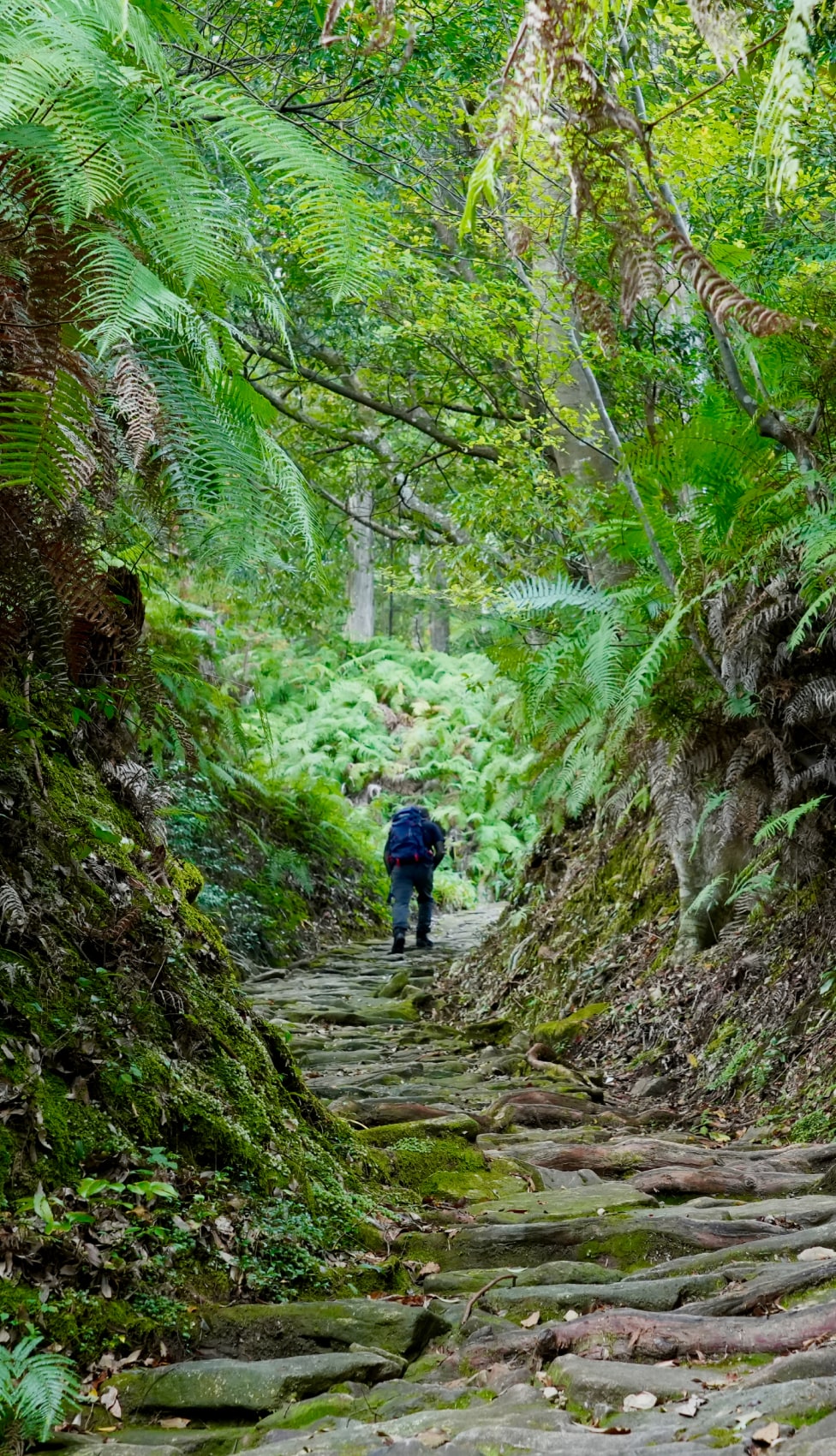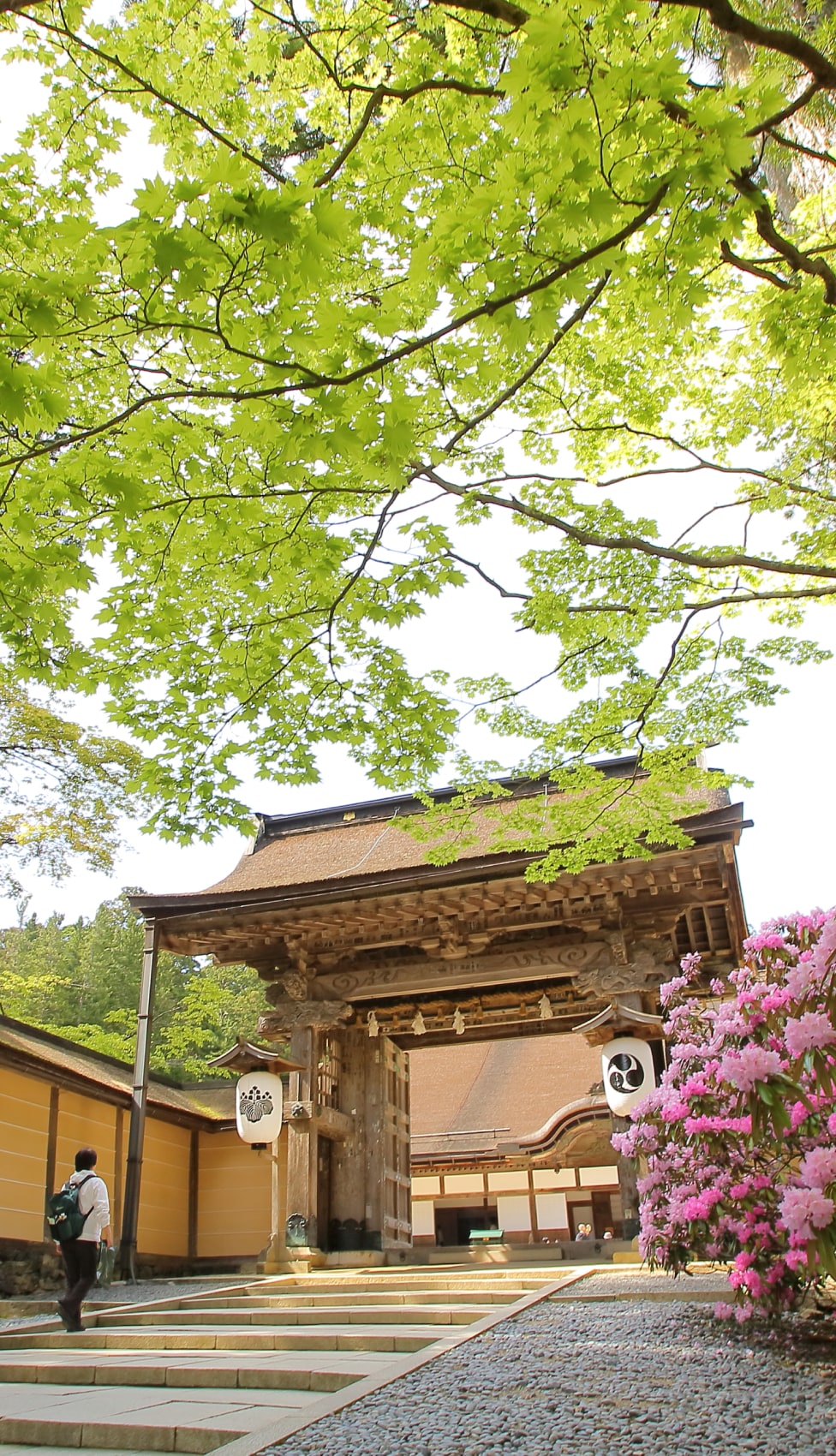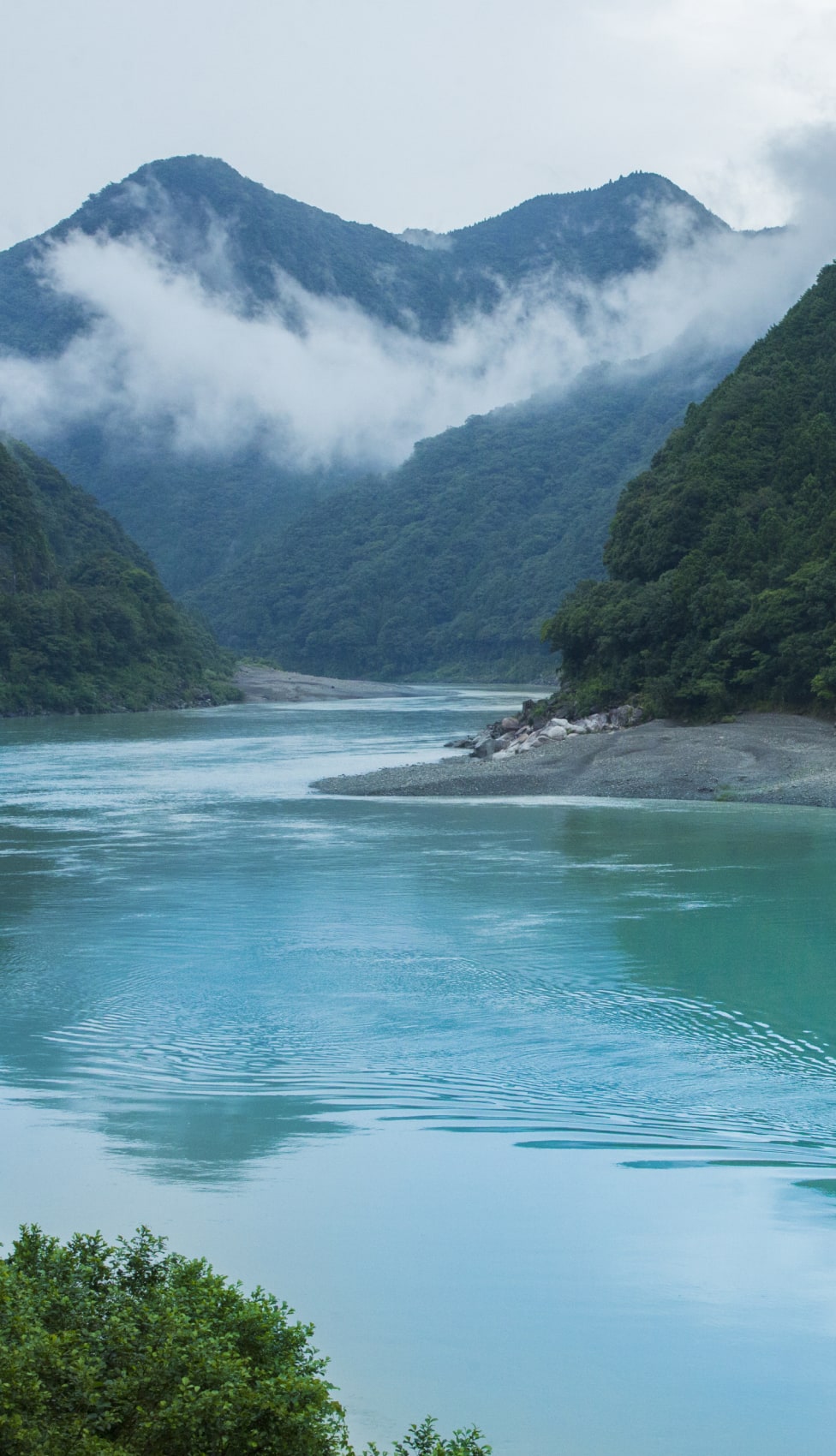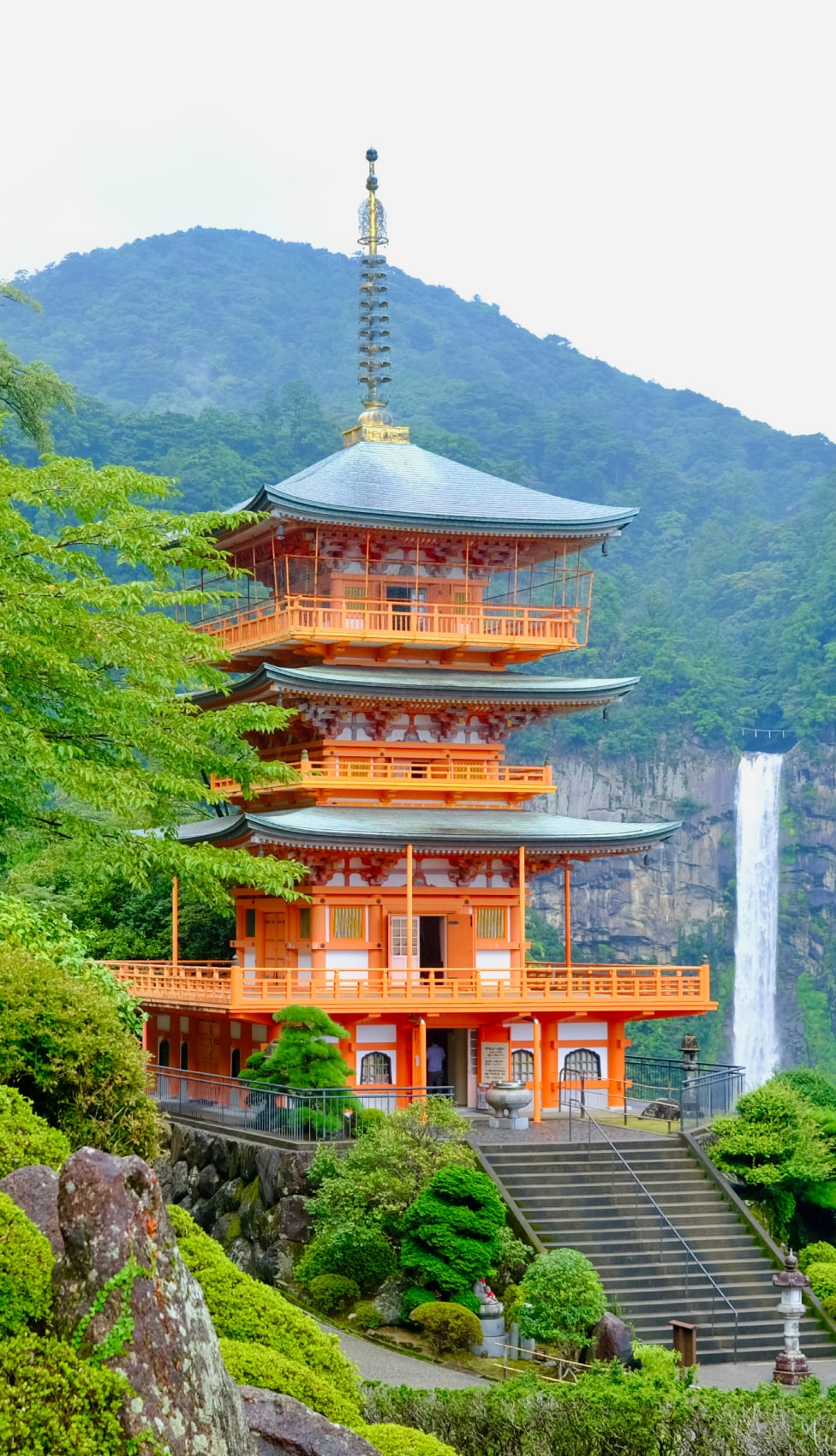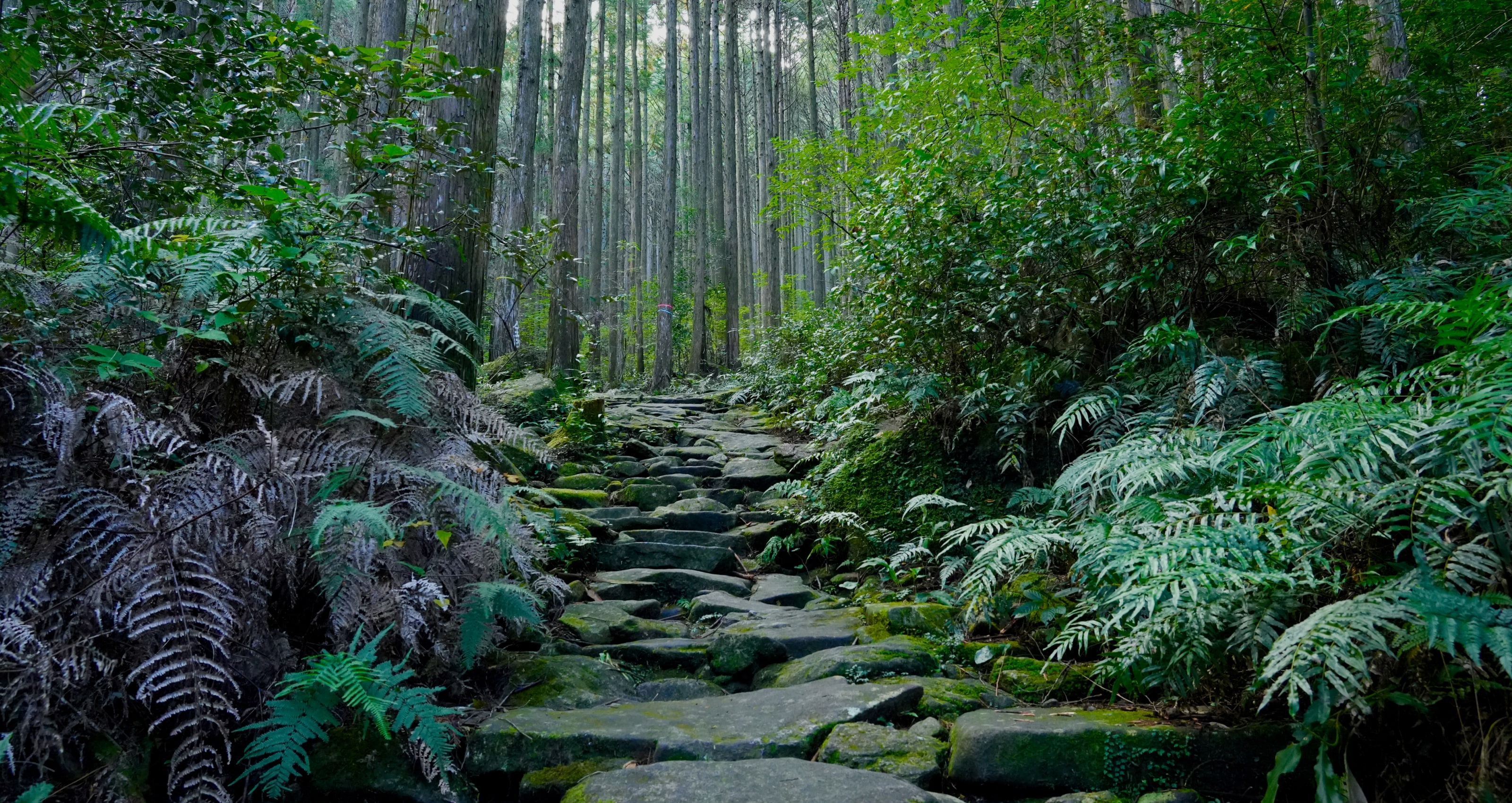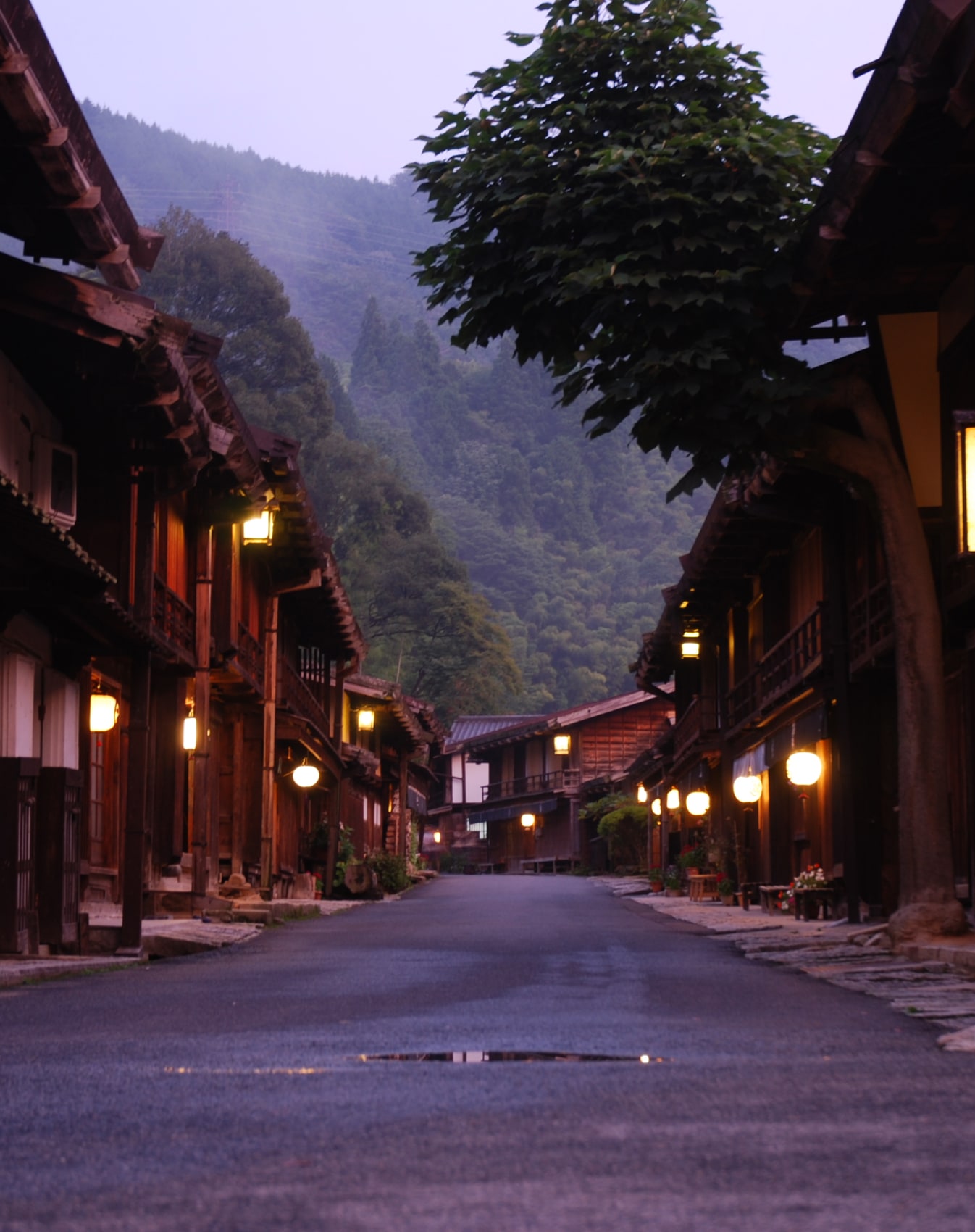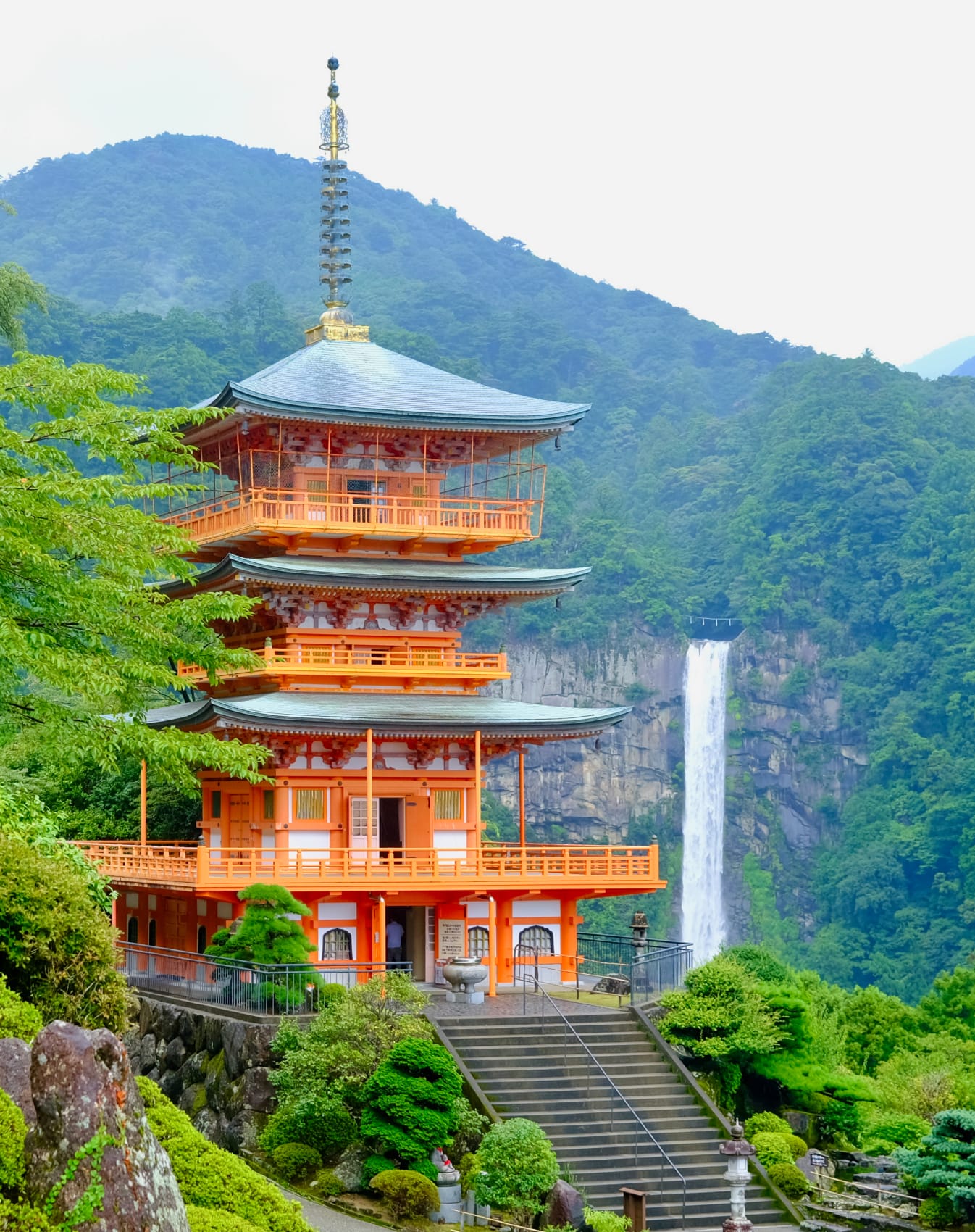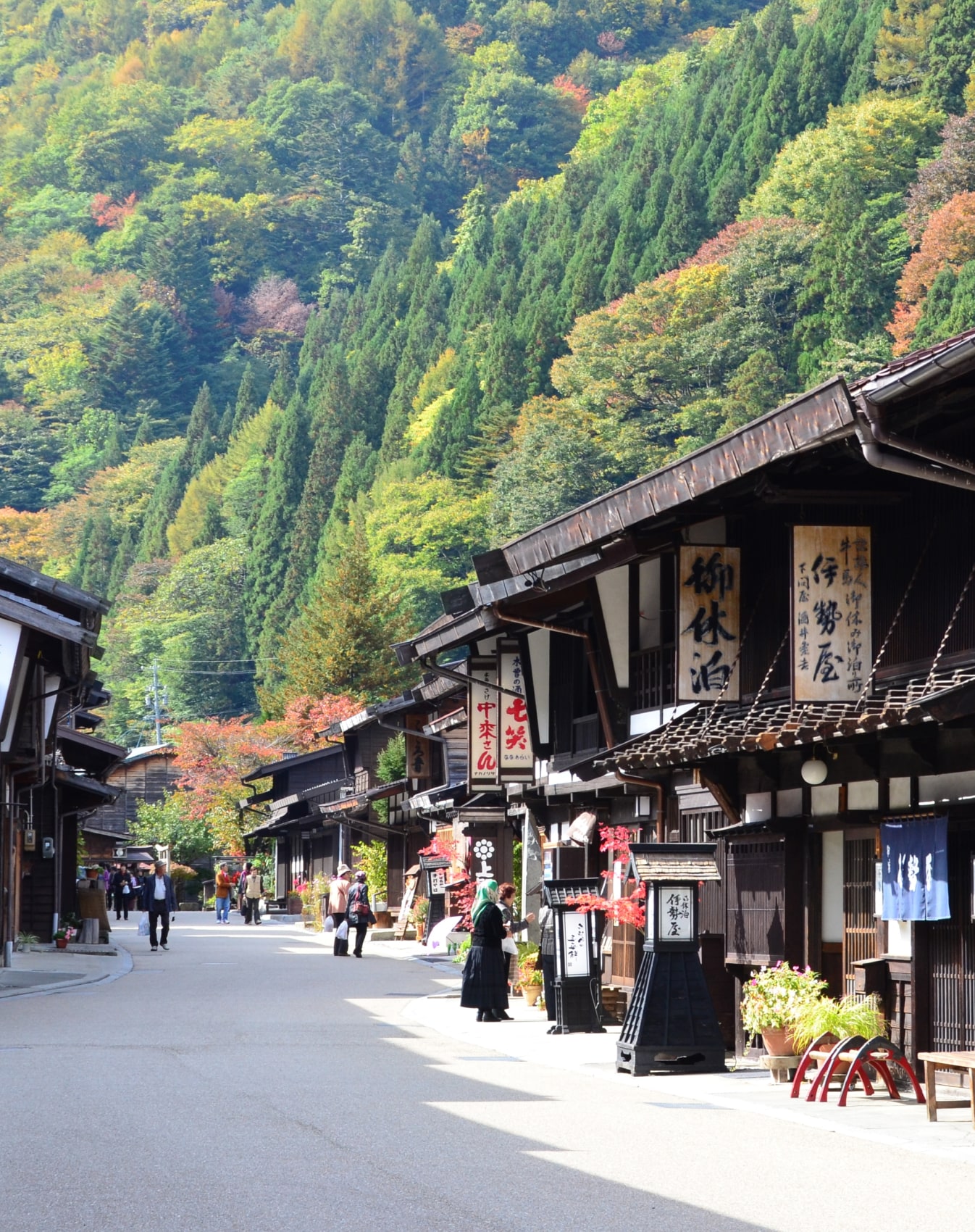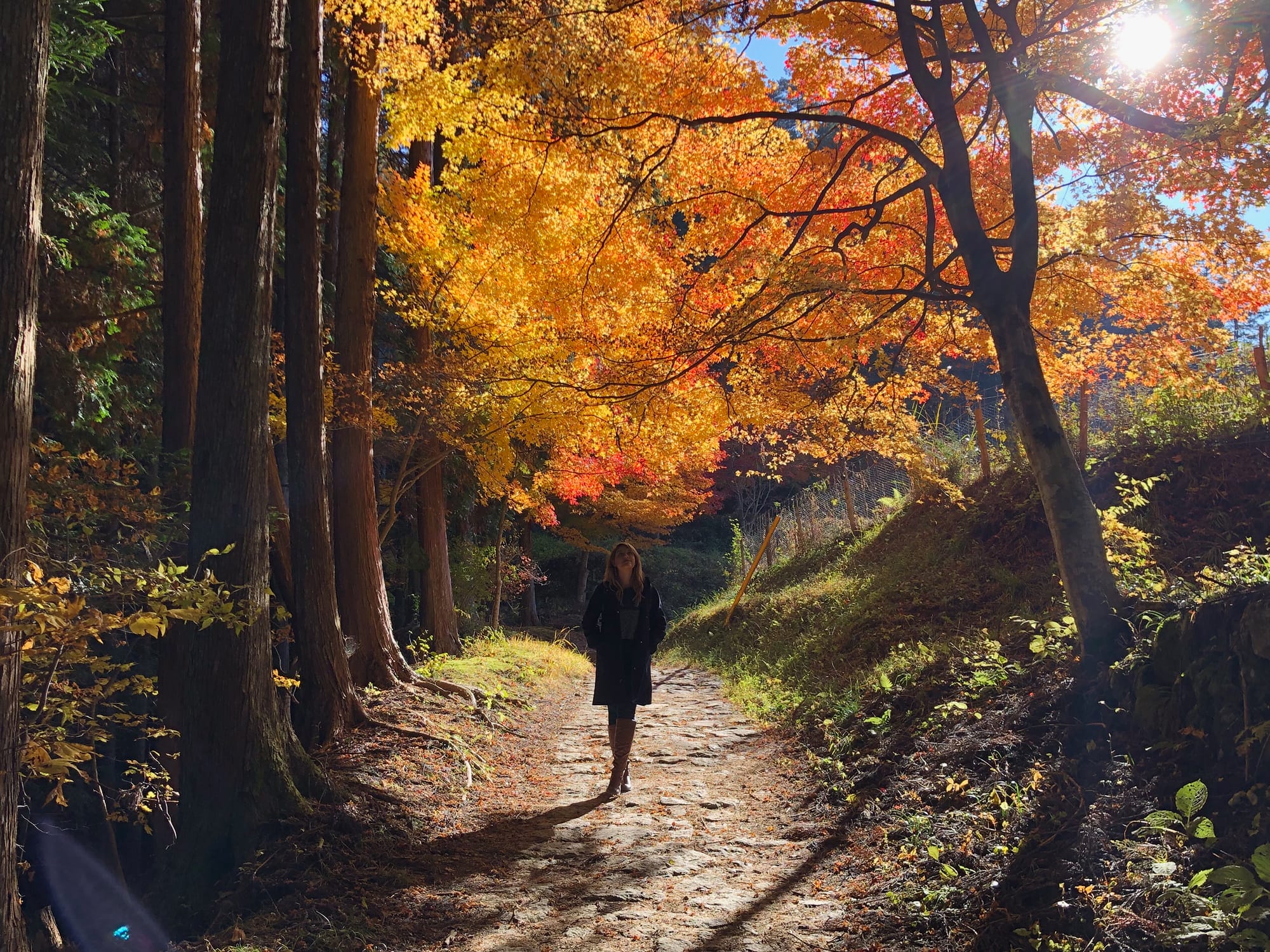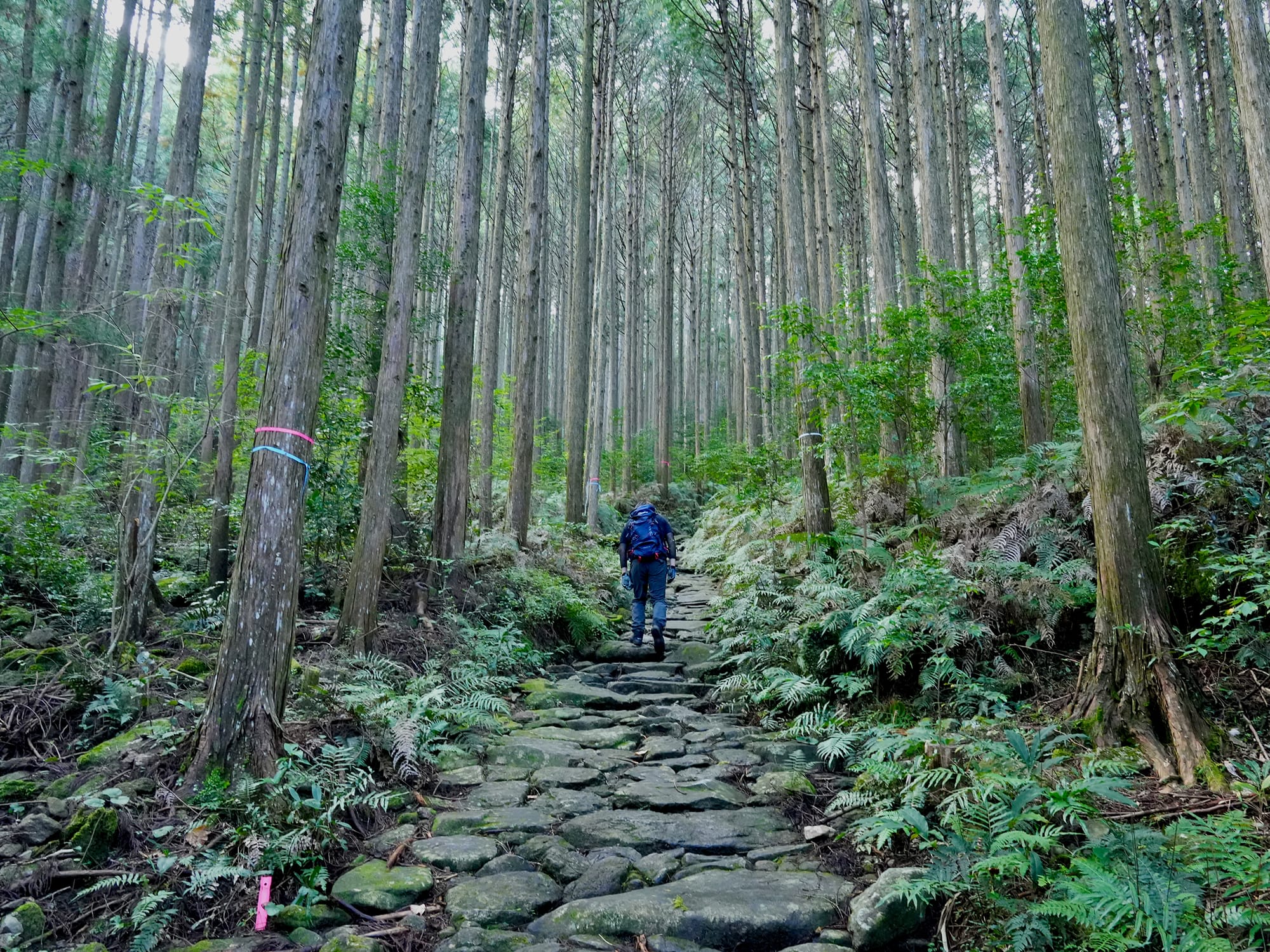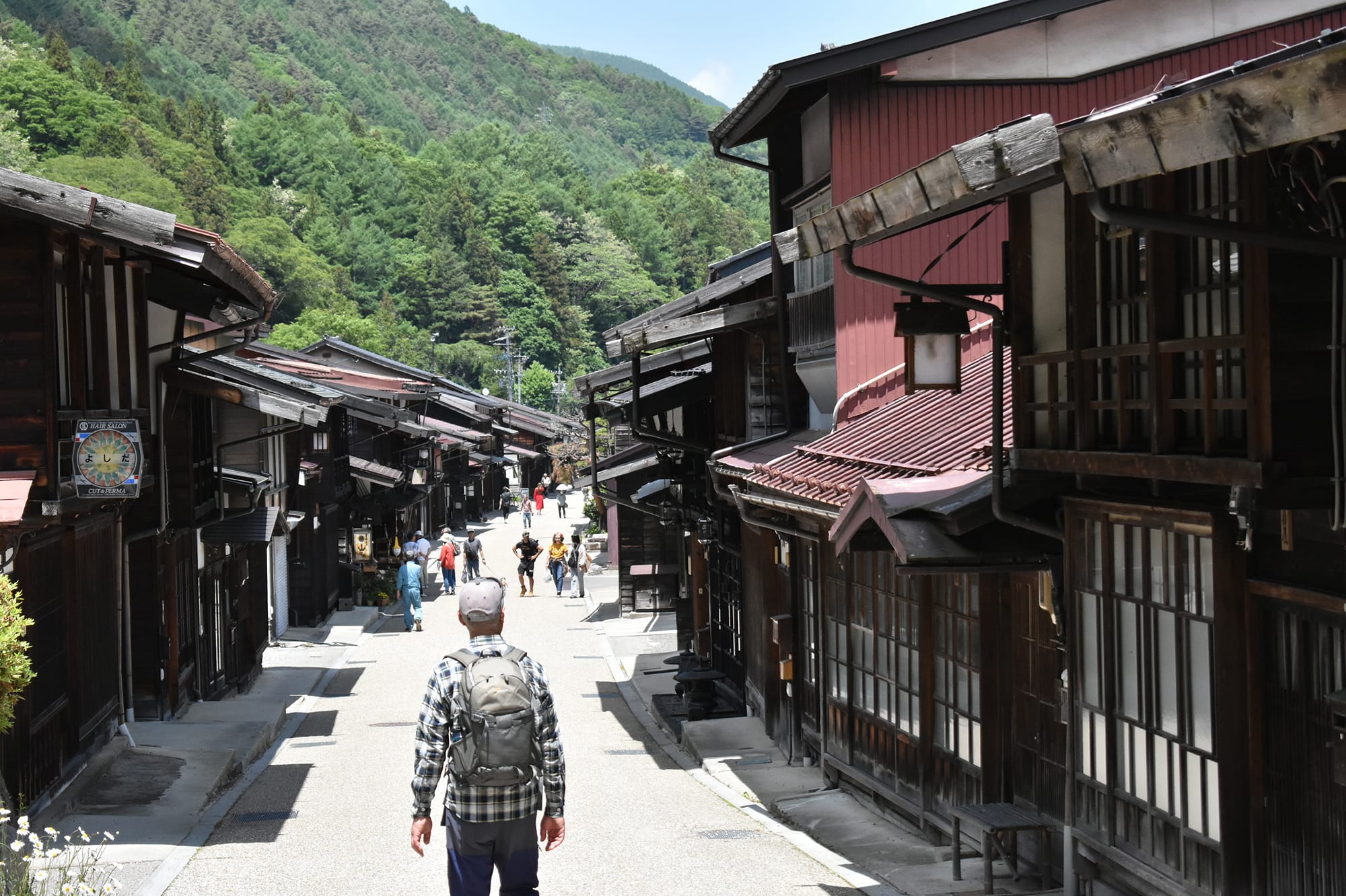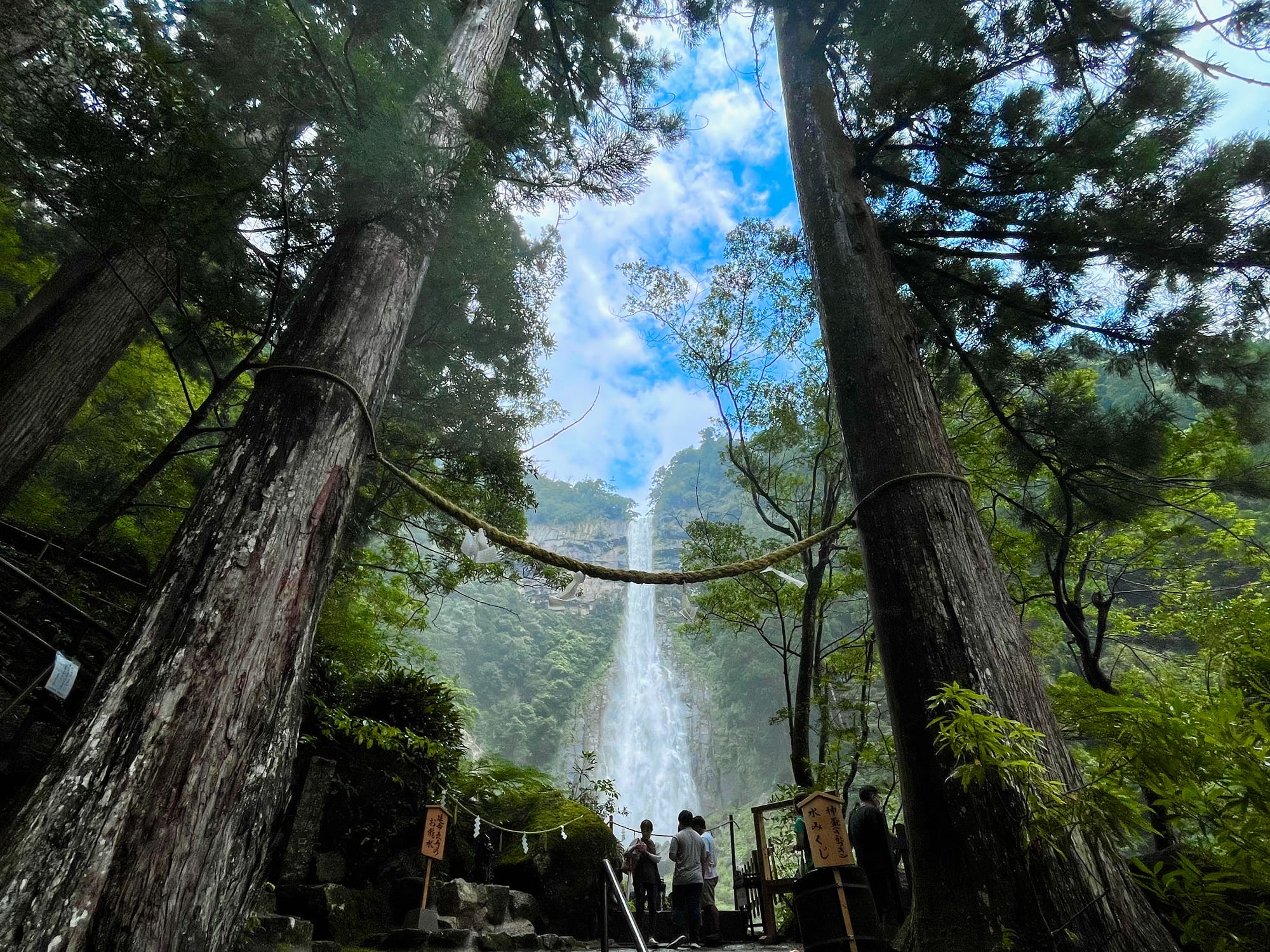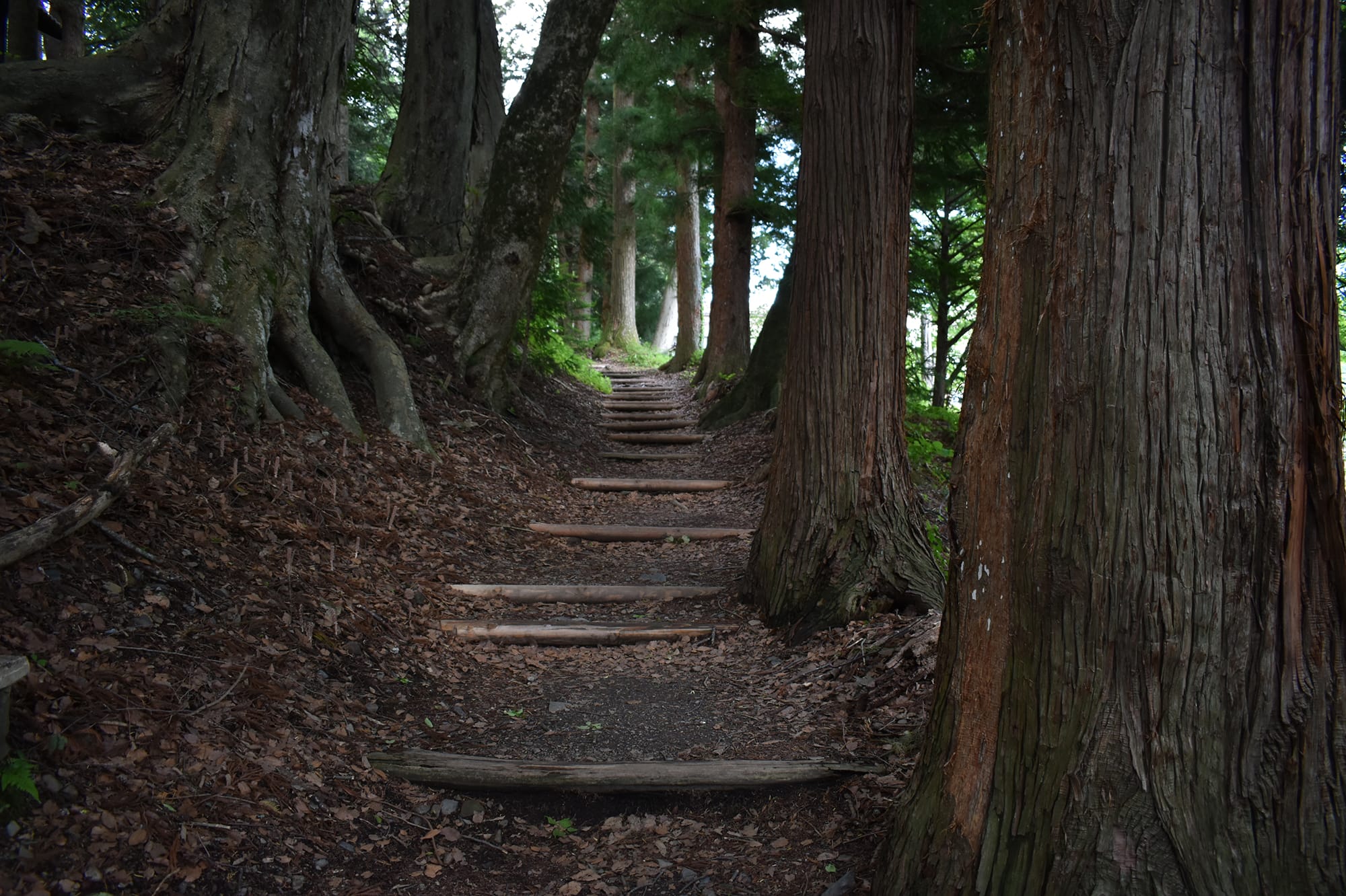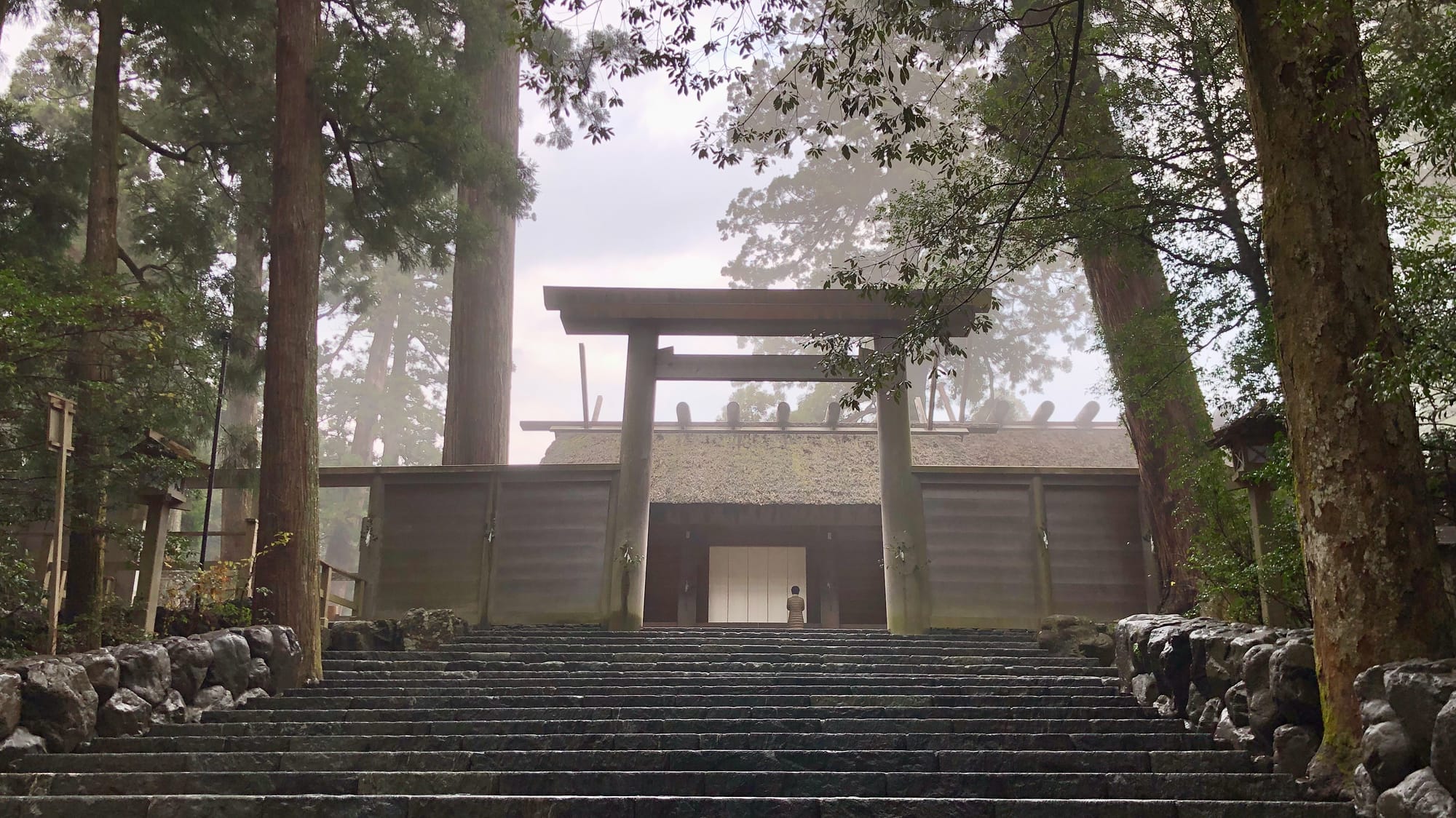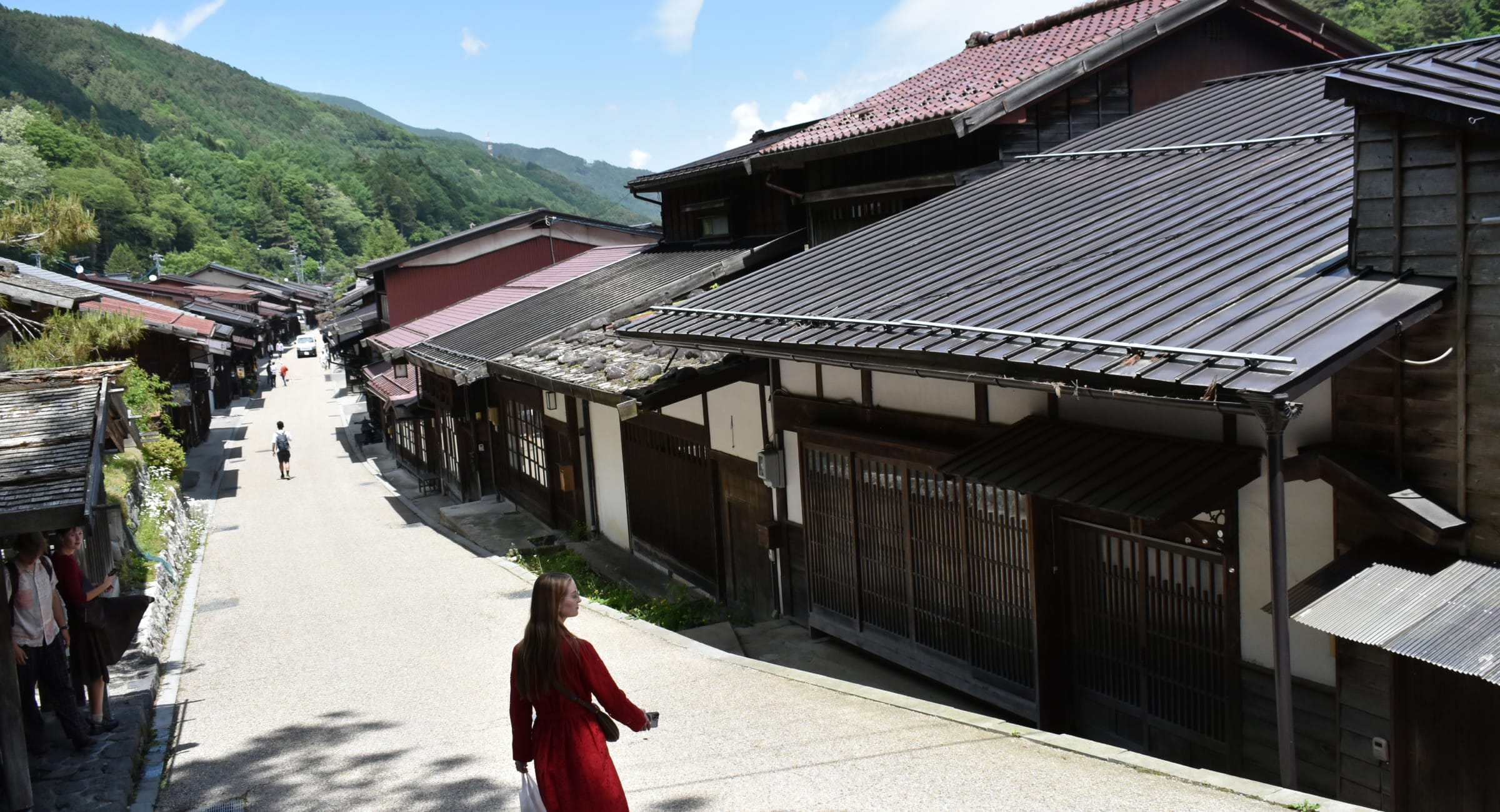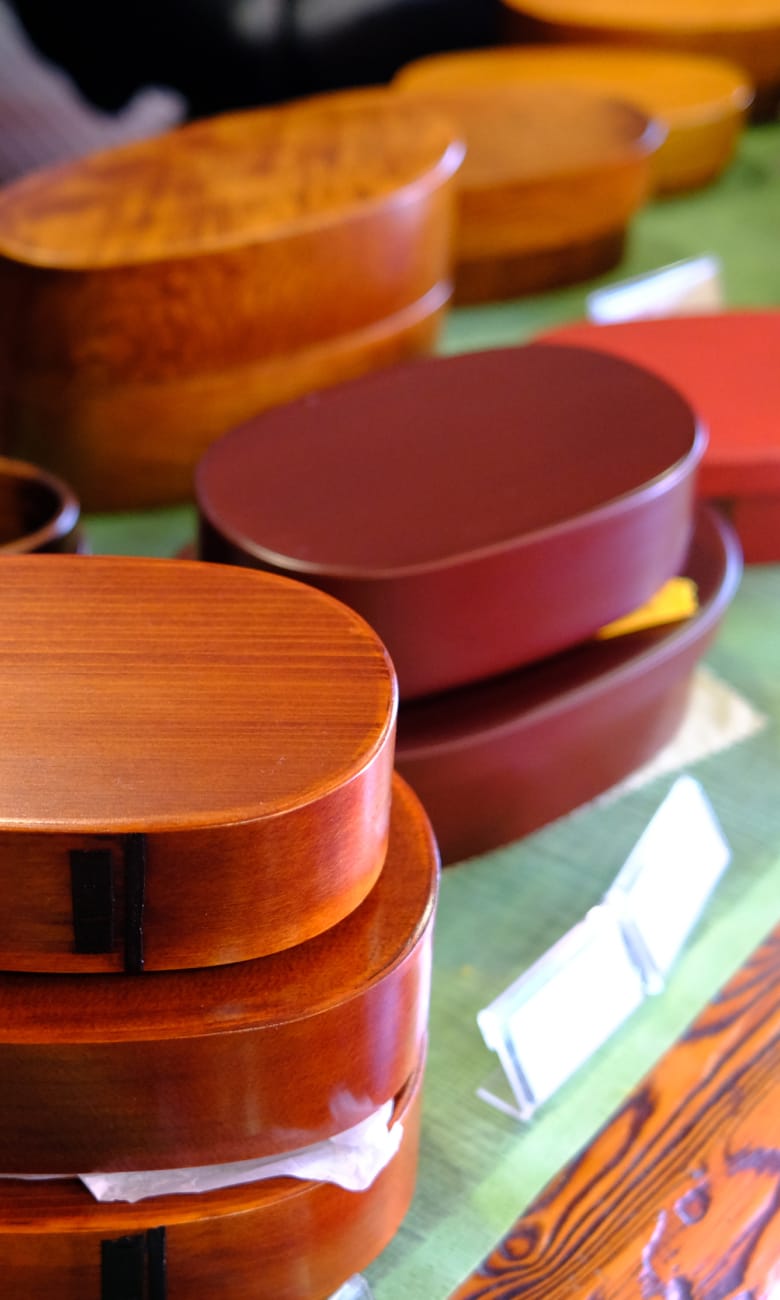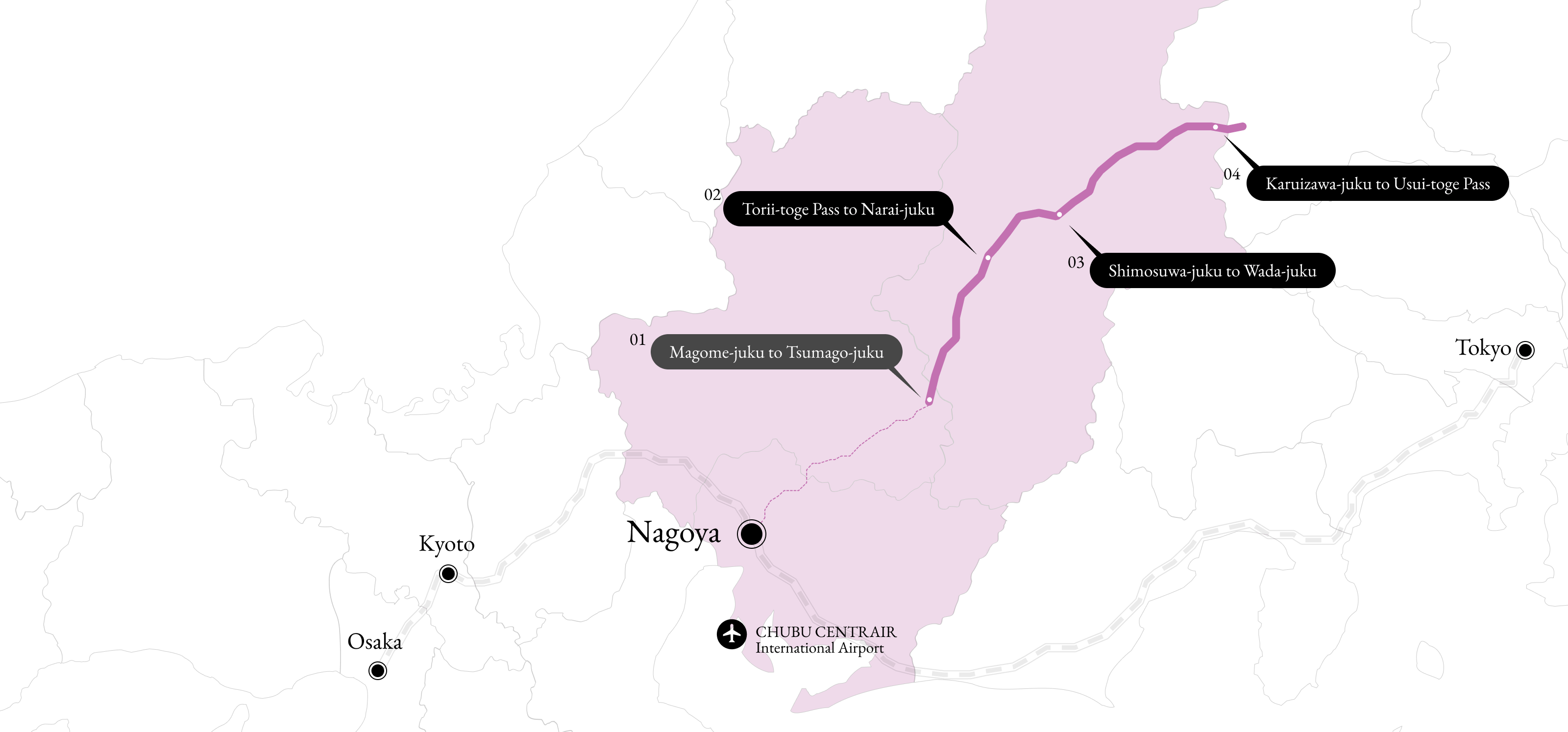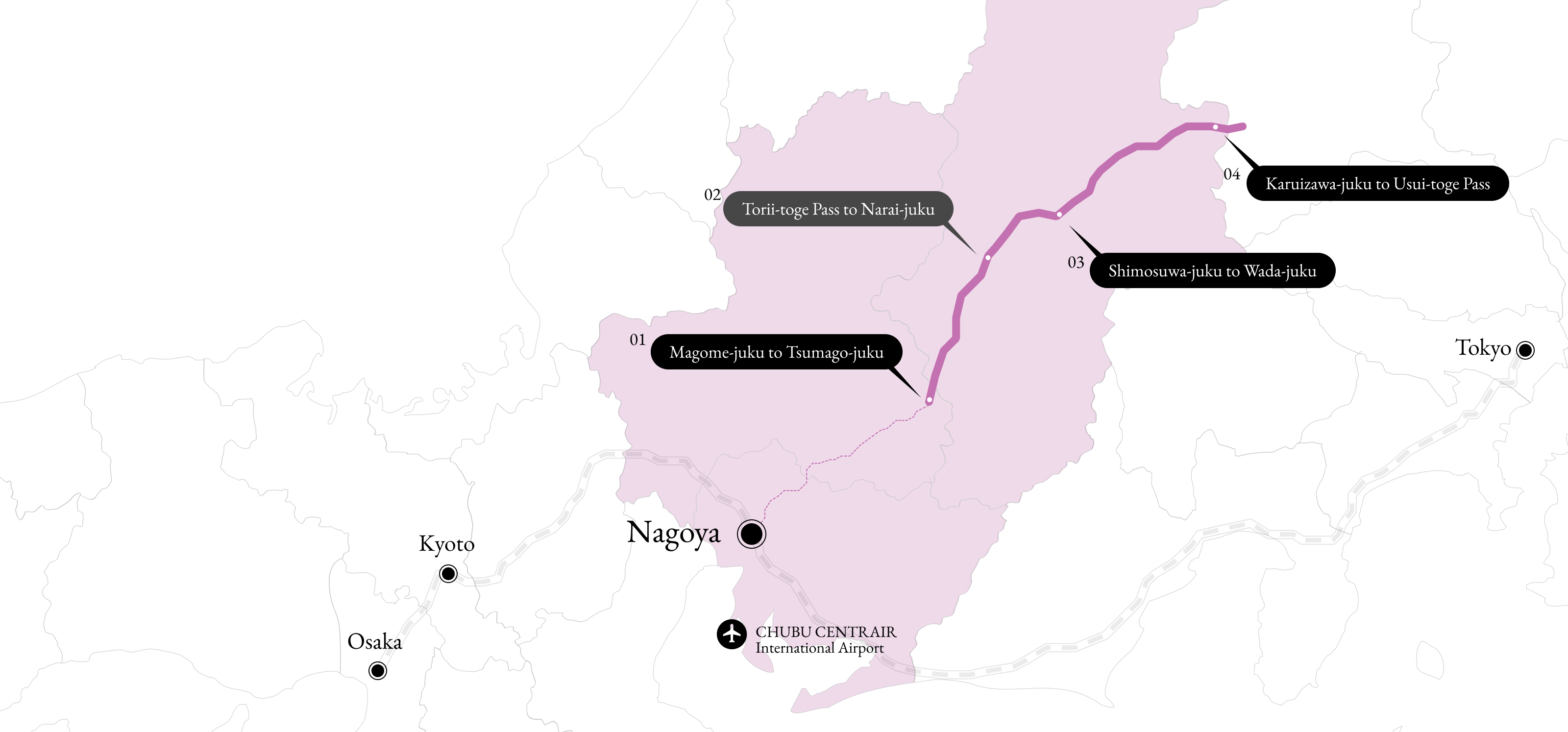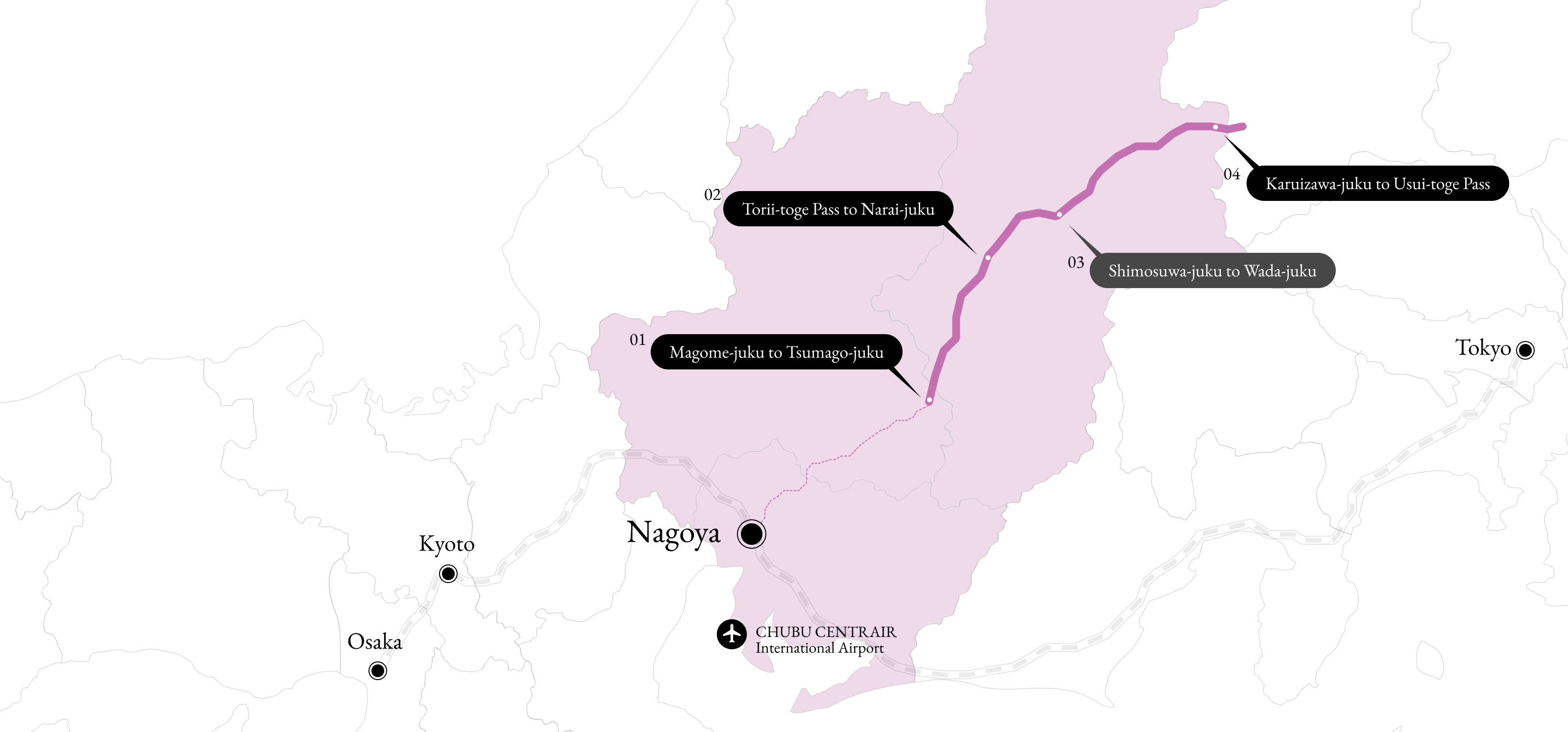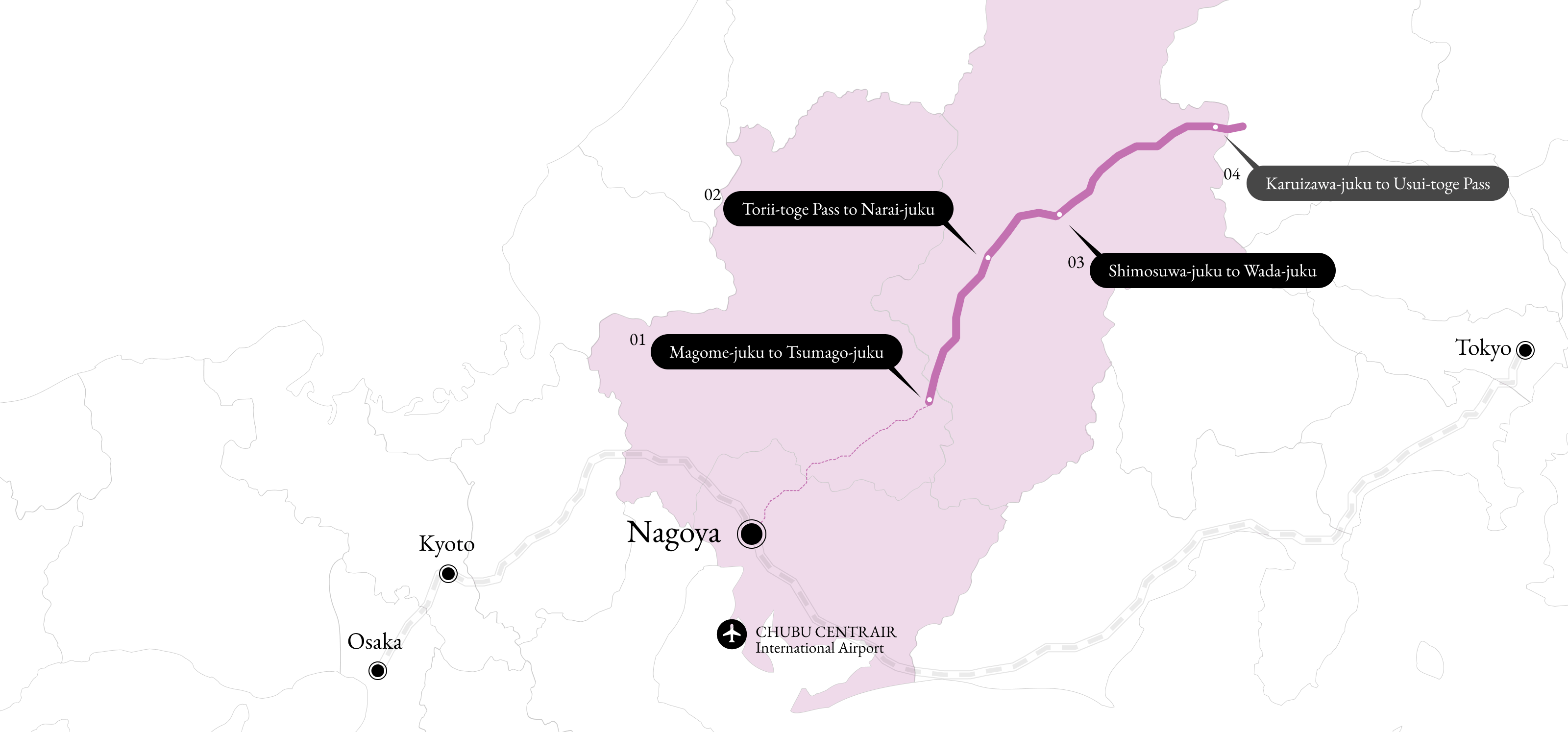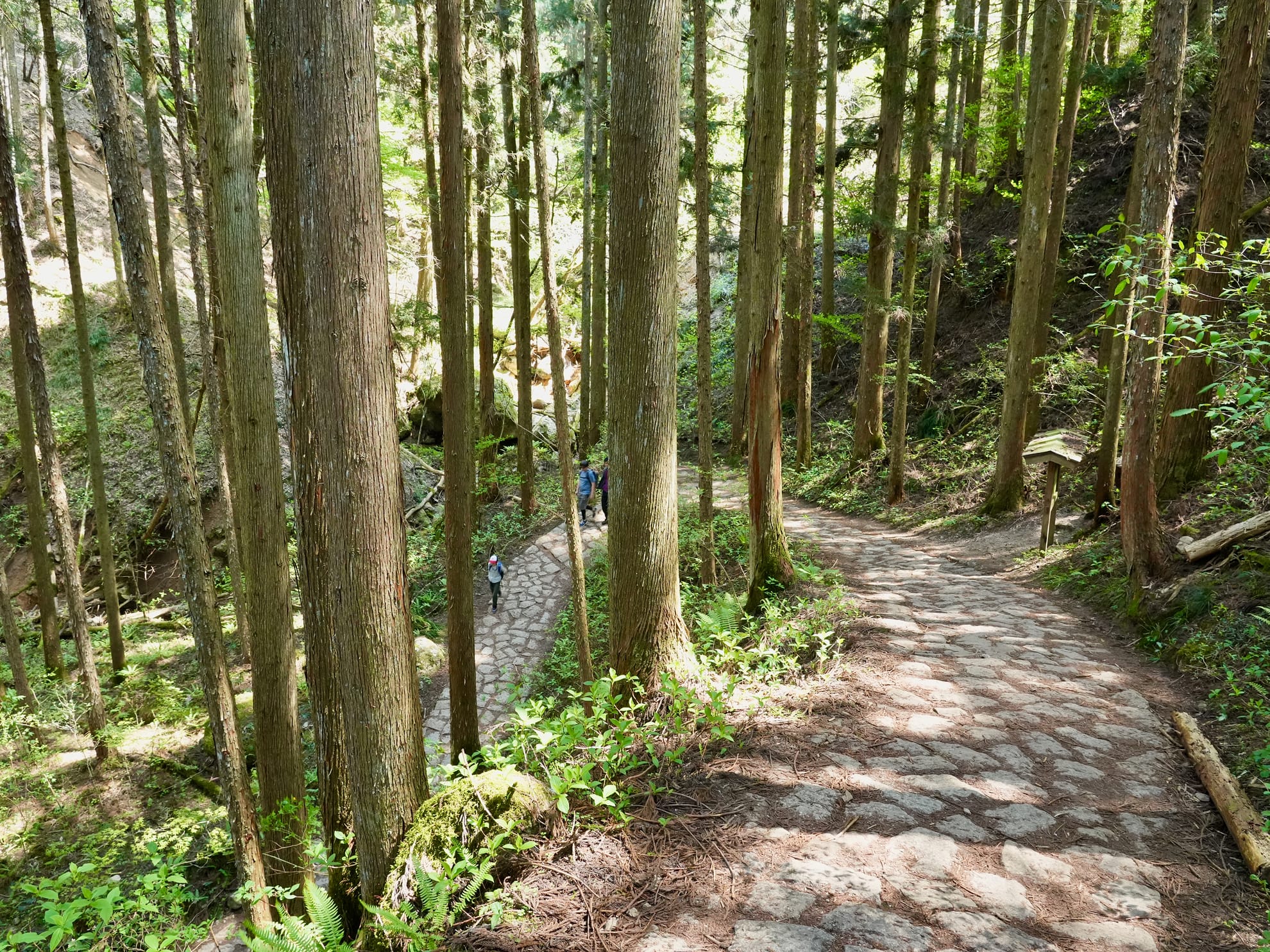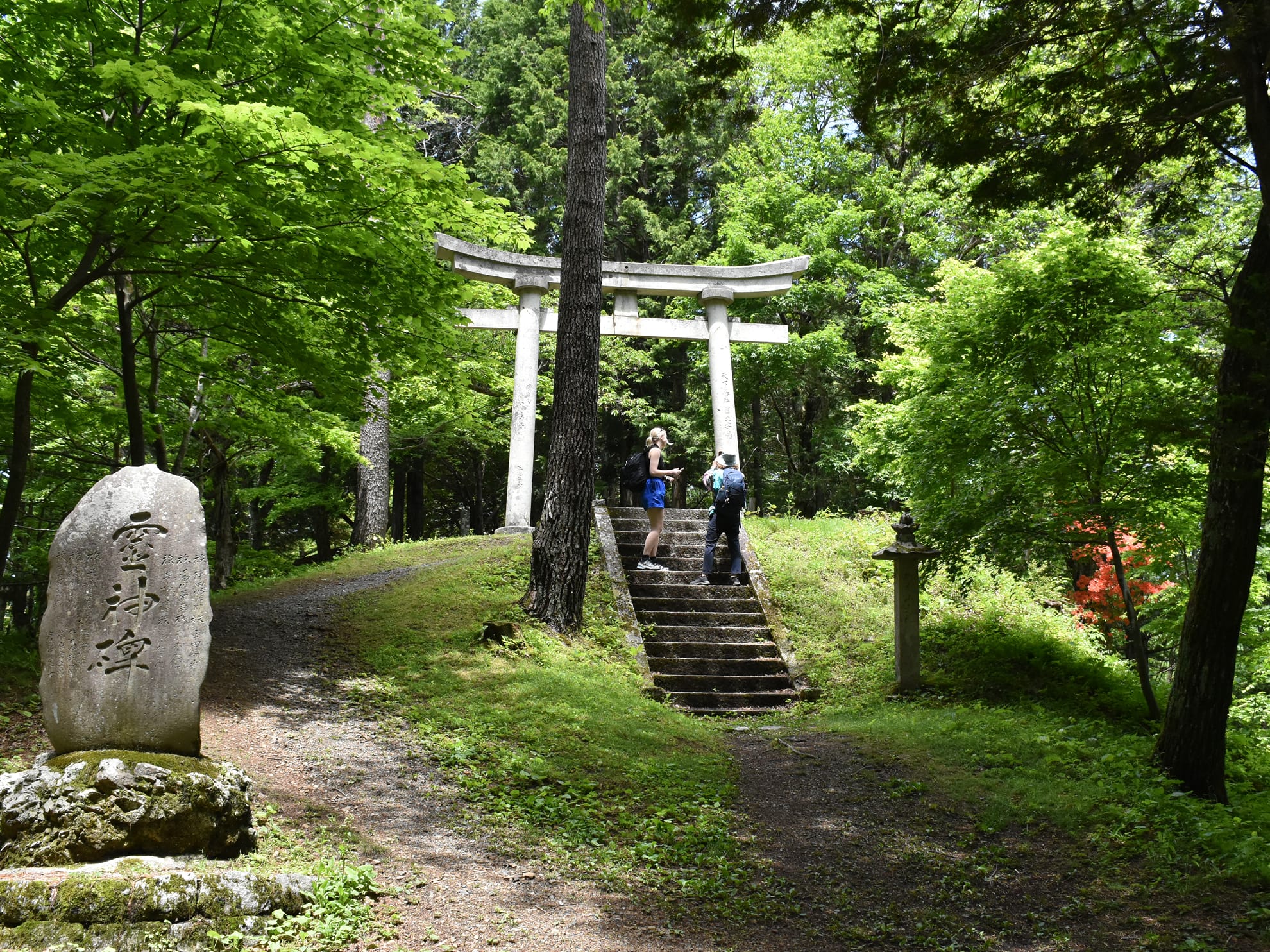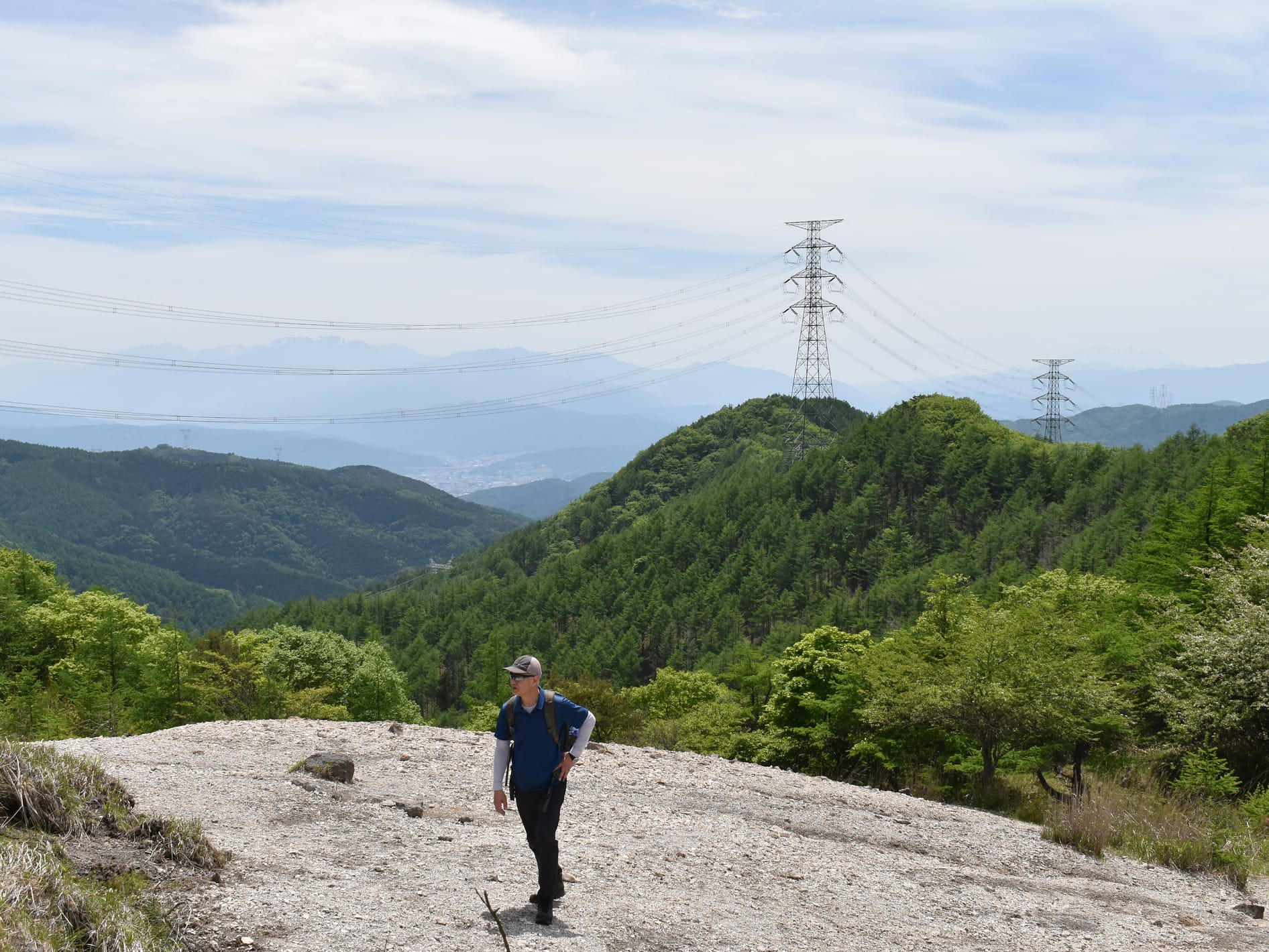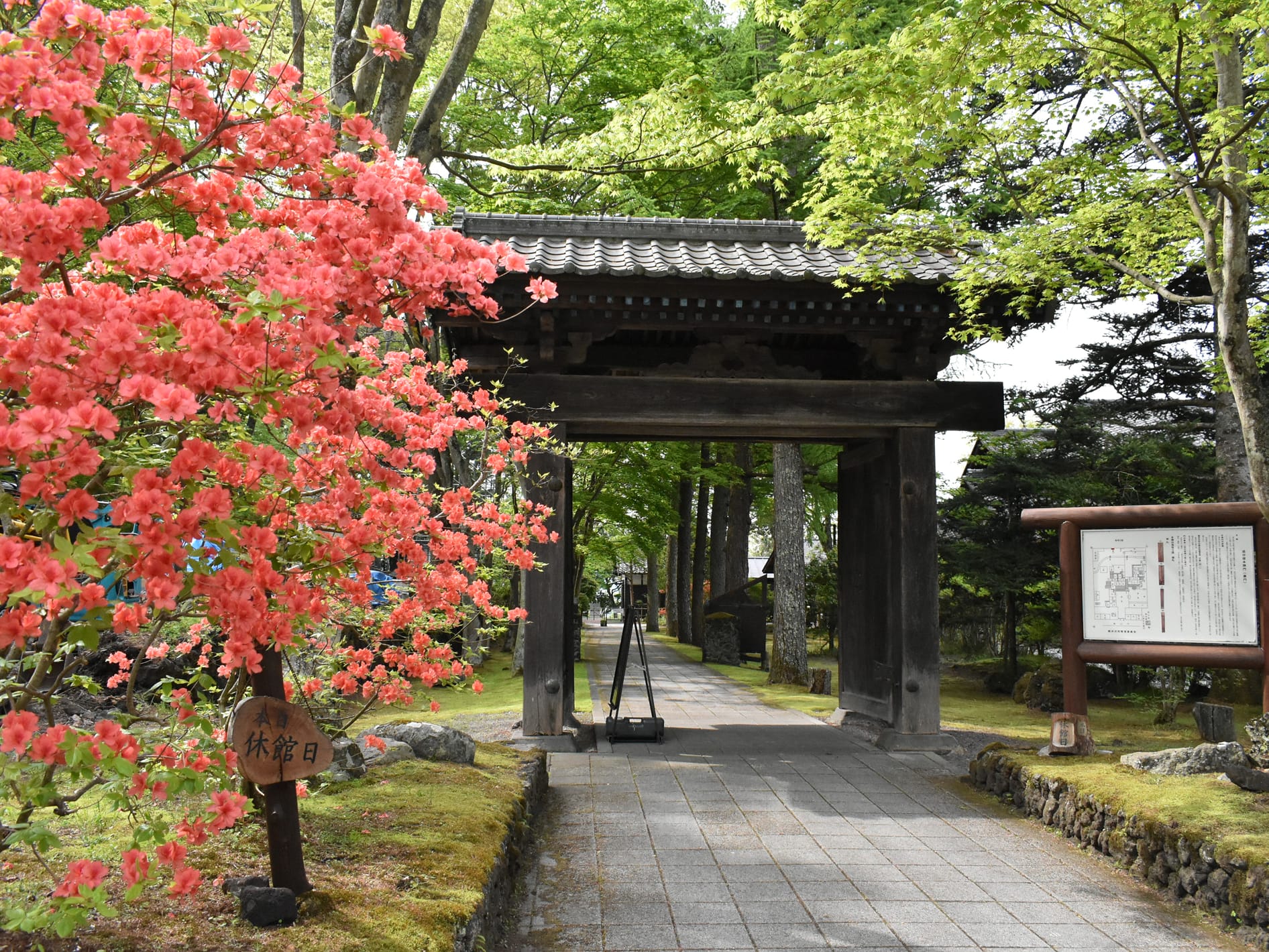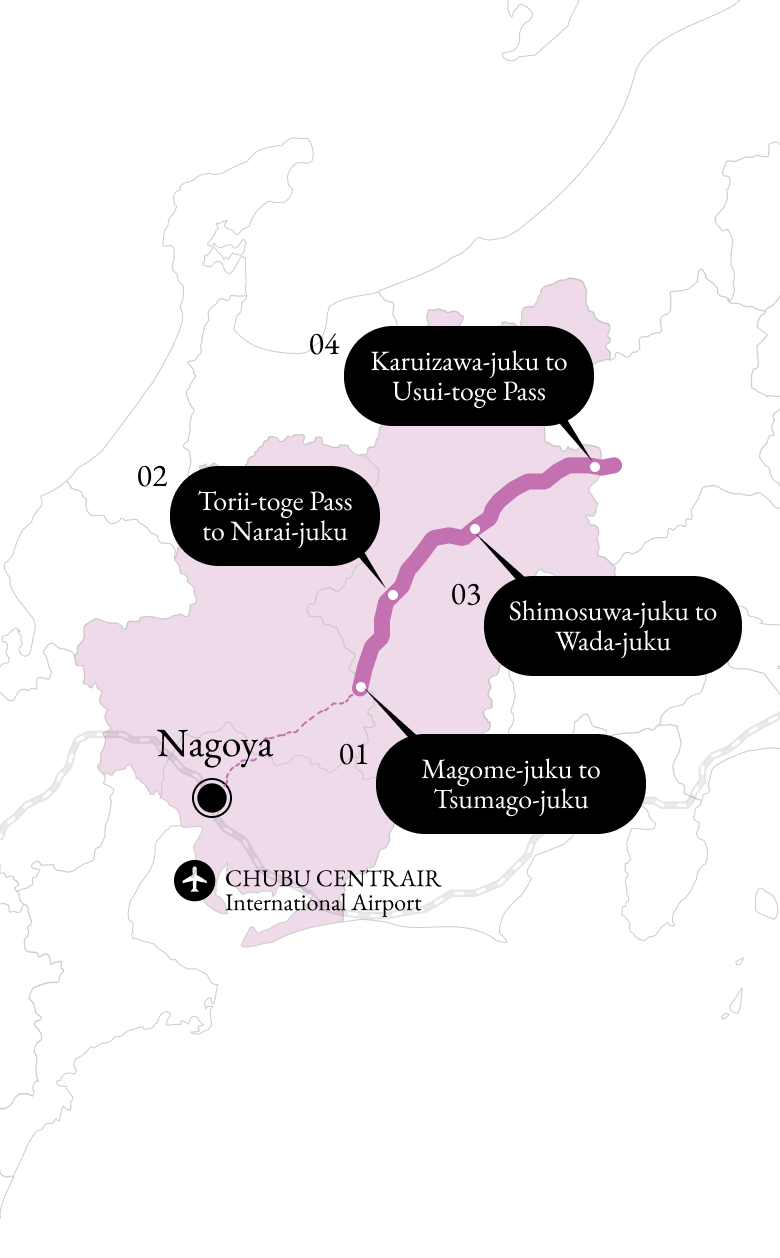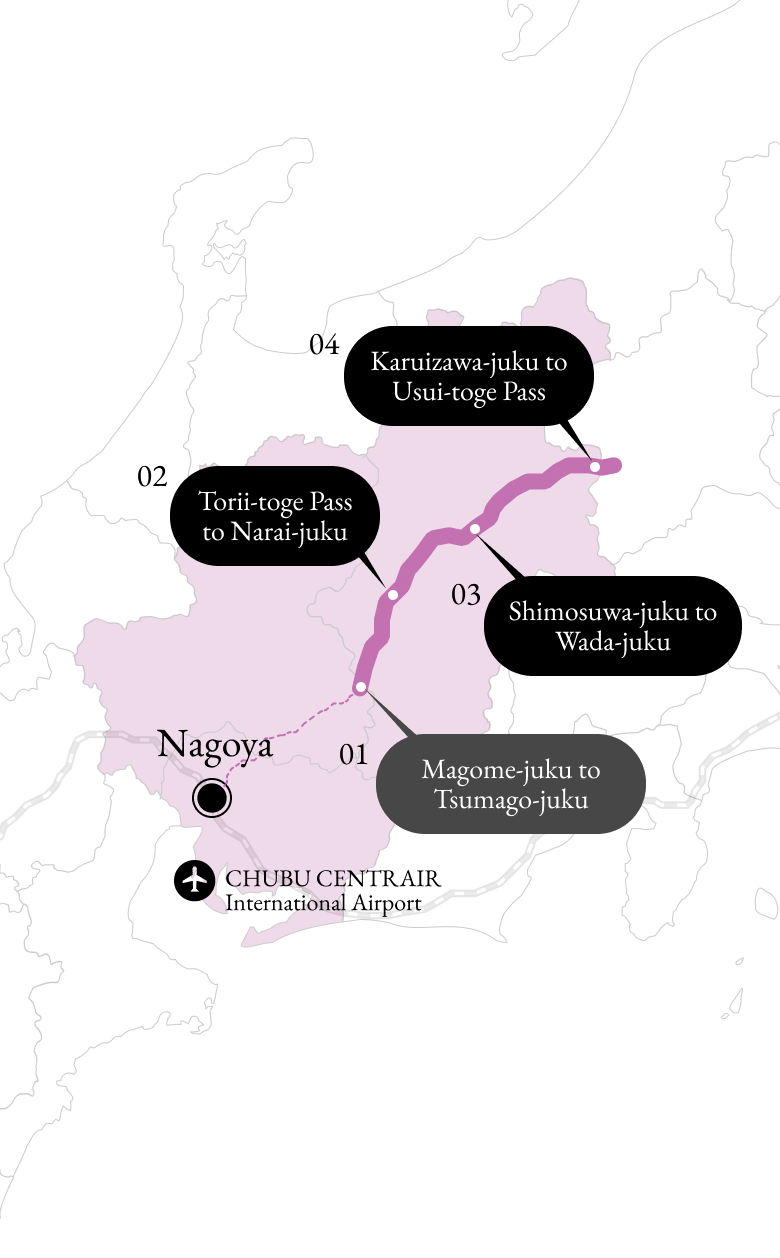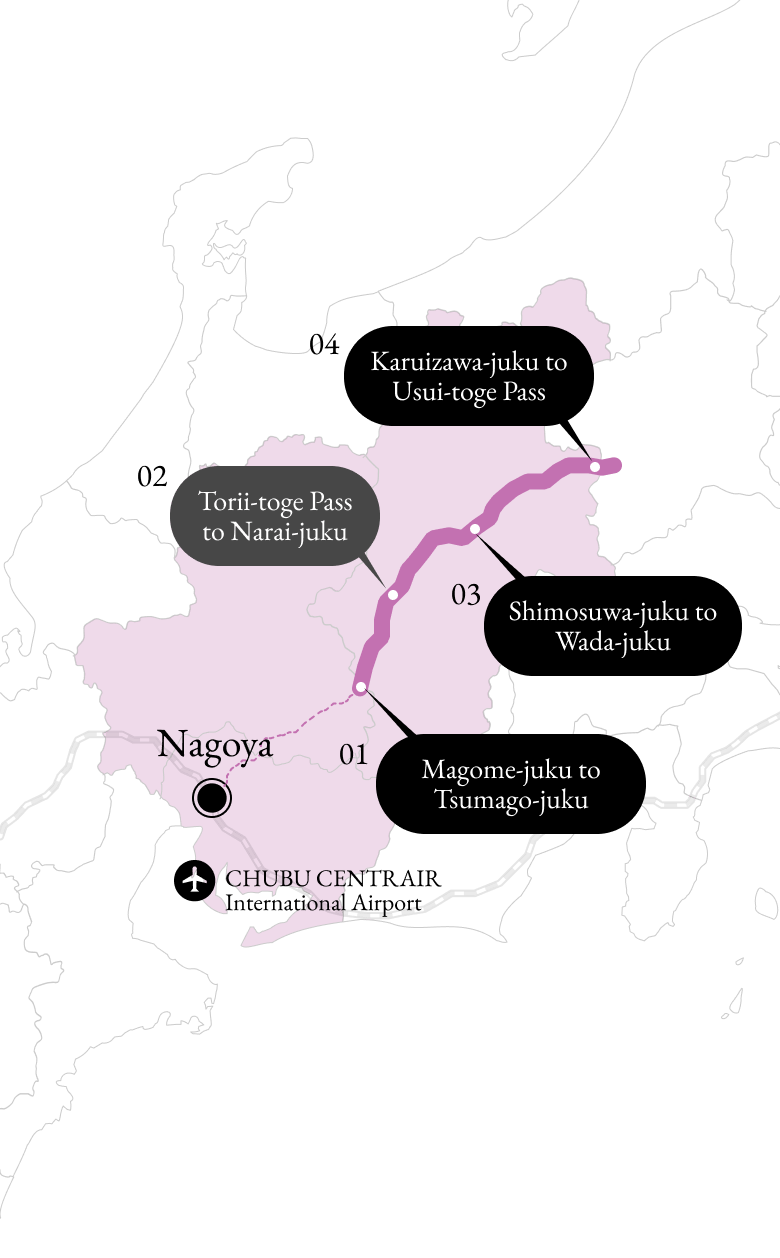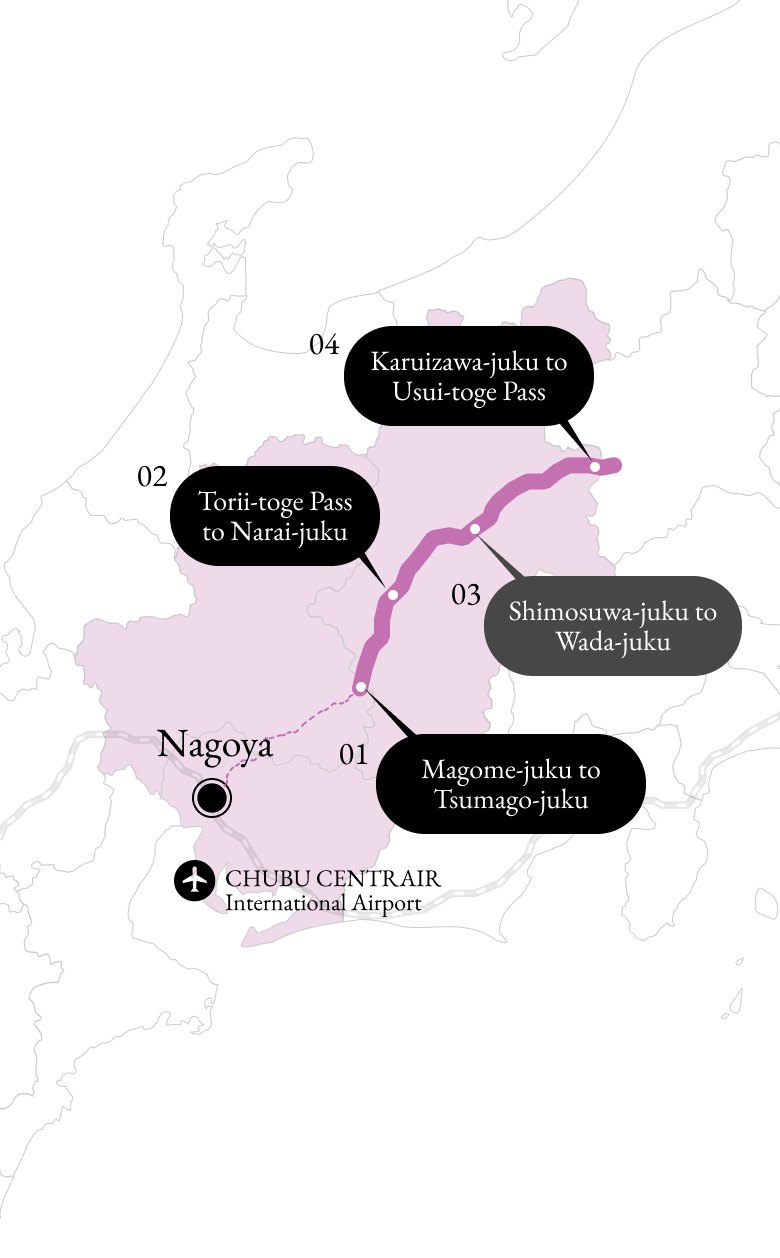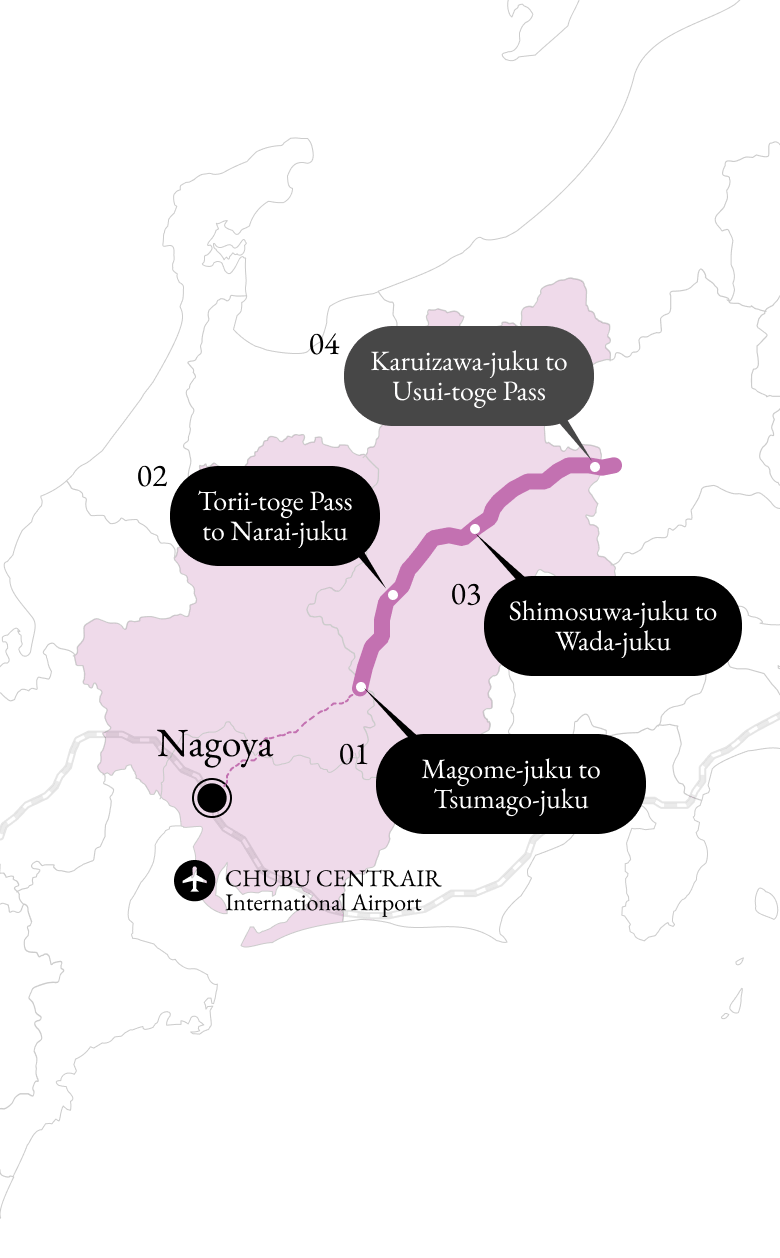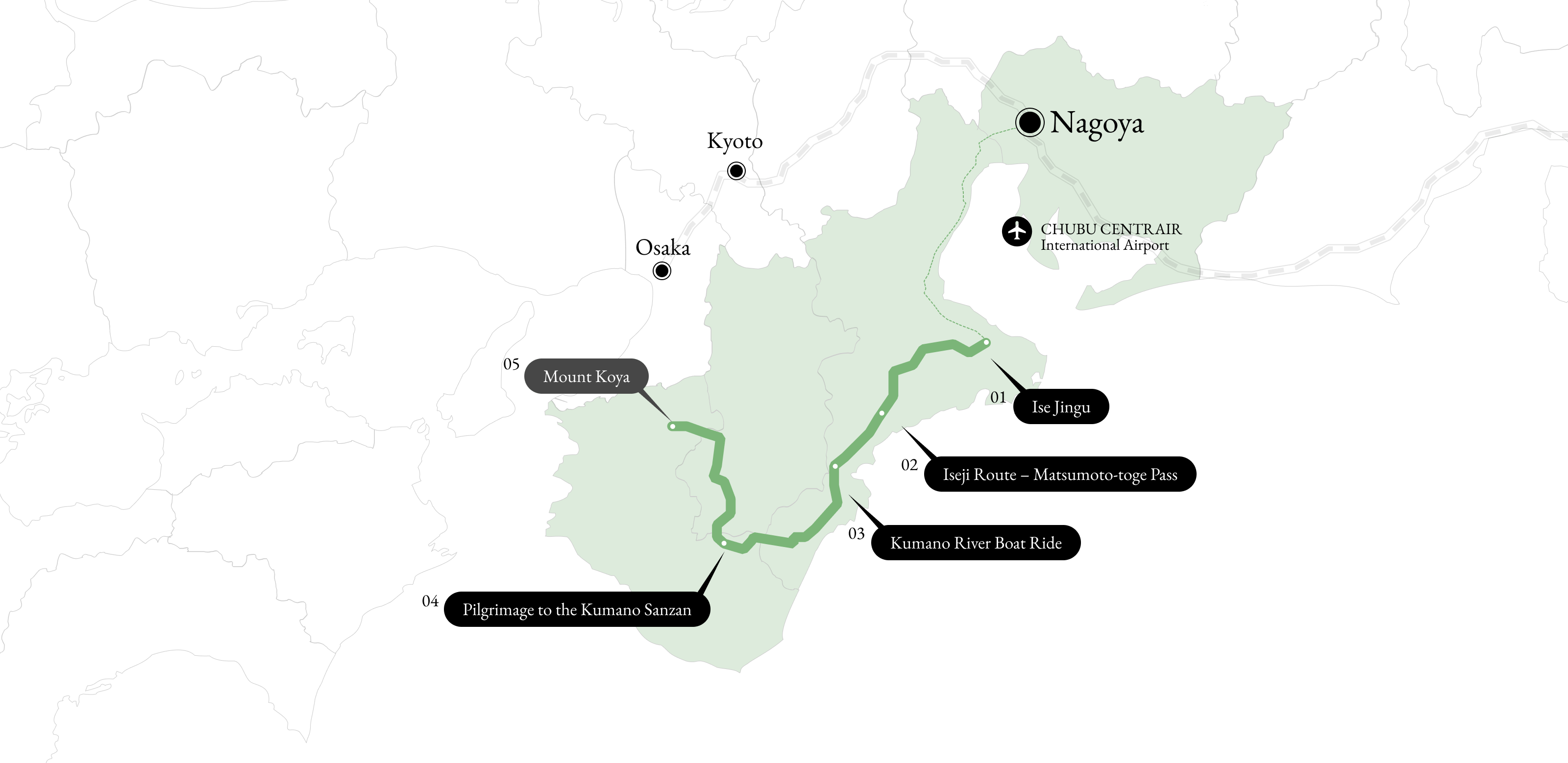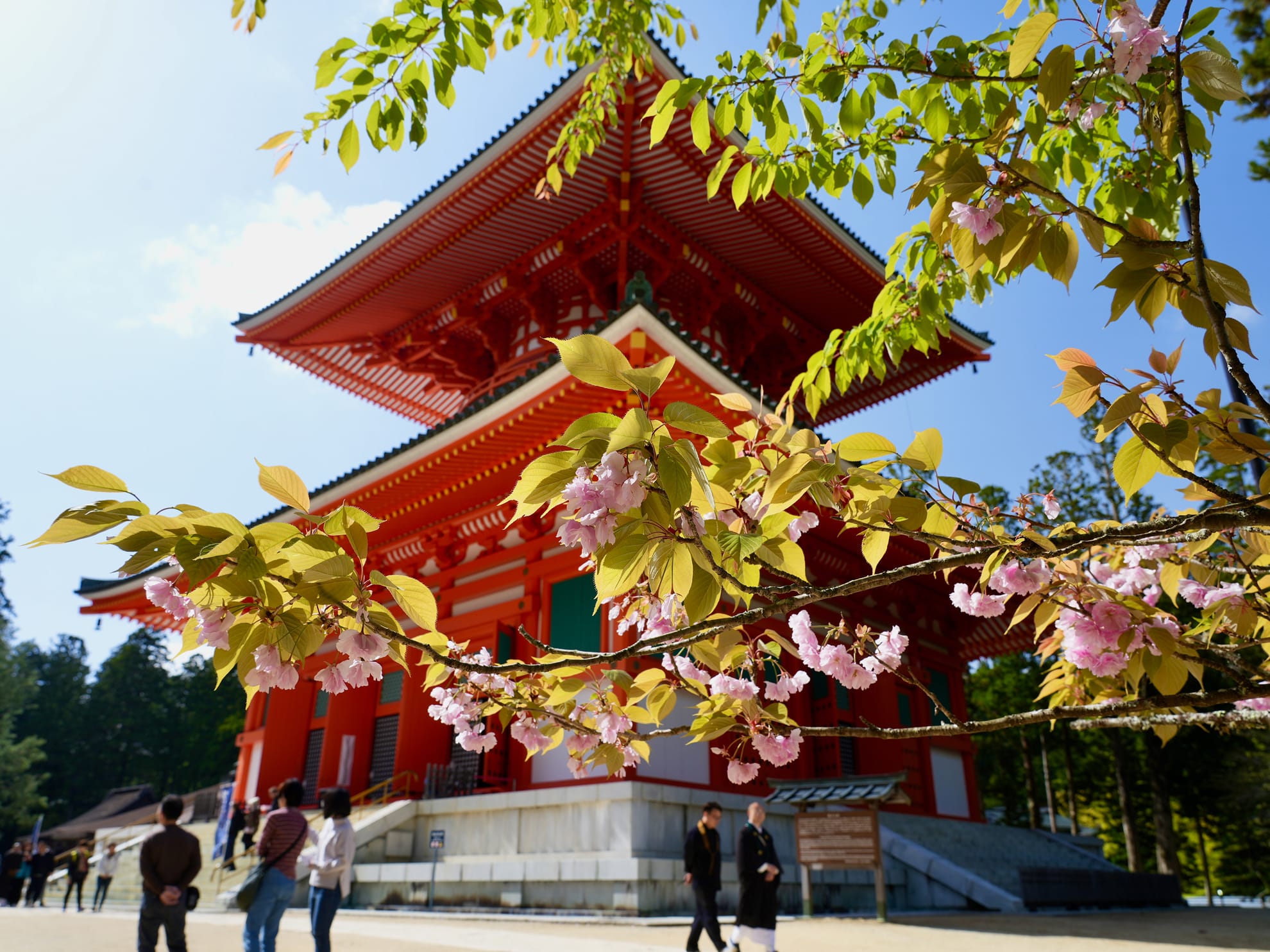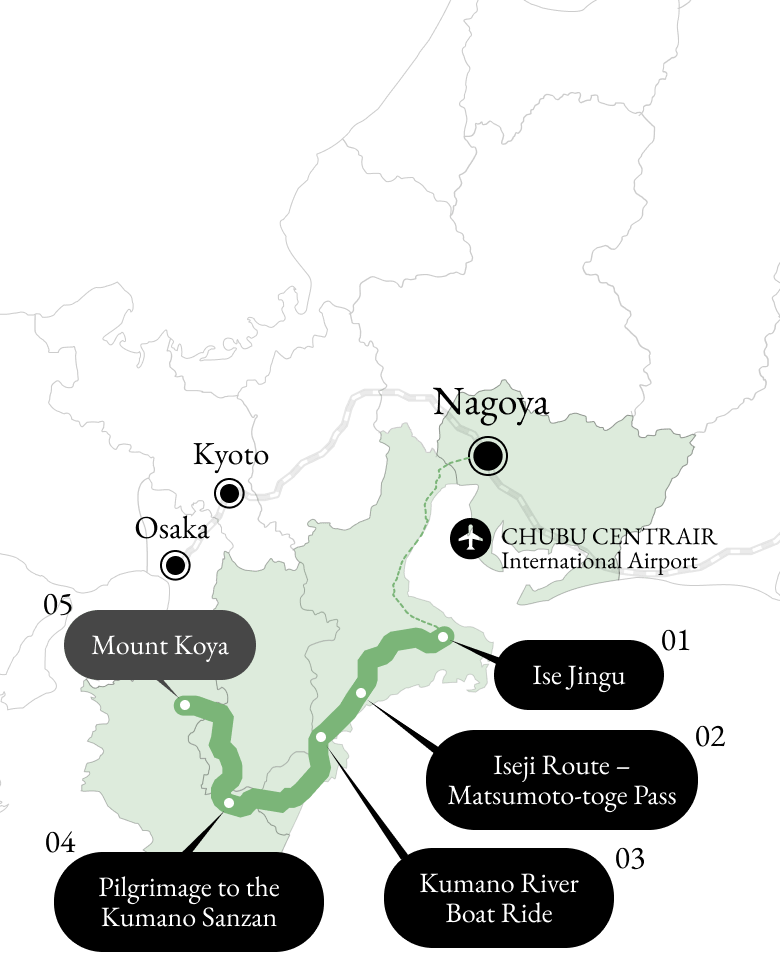NAKASENDO&
KUMANO KODO
Samurai Trails and Pilgrimage Routes
KUMANO KODO : Iseji
Walk Japan from Nagoya —
Two Roads, Two Histories
Crossroads of Time
Travelers once moved with purpose along these two historic arteries—the Nakasendo, walked by samurai and traders, and the Kumano Kodo, where pilgrims carried their hopes and prayers through mountains and forests. Their origins differ, as do their landscapes—but both offer glimpses into the timeless beauty at the heart of Japan. Nagoya sits quietly at the intersection of these two paths. Well-connected via Chubu Centrair International Airport, it’s not just a waypoint, but a natural crossroads for the journey ahead. Stone-laid inclines, hushed mountain passes, trails that glance toward the sea—let your senses take the lead. Some experiences can only be found by walking. Begin your journey across time—from Nagoya.
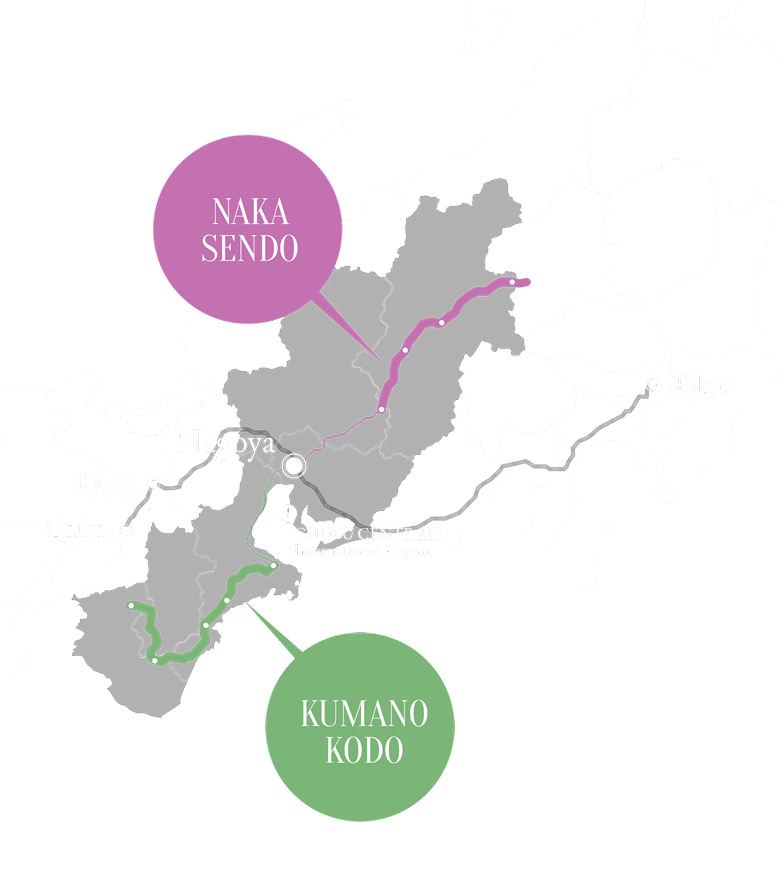
Magome-toge Pass, Nakasendo
Linking Edo and Kyoto, the Nakasendo was once a stage for processions, trade, and messengers—a road of both formality and hardship.
From Magome-juku to Usui-toge Pass, four segments invite you into very different registers of travel:
Magome-juku and Tsumago-juku are post towns that preserve the rhythms of daily life from centuries ago.
Torii-toge Pass and Narai-juku lead you deeper into wooded slopes, where craftspeople built with patience and precision.
Shimosuwa-juku to Wada-toge Pass reveals a grand sense of scale, with landscapes that rise and fold, and roads that challenge your footing.
Karuizawa to Usui-toge Pass offers a quieter experience, where light filters through the trees and the crisp air naturally slows your pace.
Every leg of the journey leads you through historic landscapes and along paths that leave a lasting impression.
 Magome-juku to Tsumago-juku
Magome-juku to Tsumago-juku
A stretch where uneven stones, sloped paths, and preserved post towns evoke the rhythm of foot travel in the Edo period.
 Torii-toge Pass to Narai-juku
Torii-toge Pass to Narai-juku
A secluded segment, where forested ridges and the enduring craft traditions of Kiso come into view. Narai-juku awaits at the end—a long, narrow town built for those who traveled far.
 Shimosuwa-juku to Wada-juku
Shimosuwa-juku to Wada-juku
A route that rises into the highlands—challenging but striking. Onsen steam and alpine contours offer respite and reward.
 Karuizawa-juku to Usui-toge Pass
Karuizawa-juku to Usui-toge Pass
Here, the trail moves through veils of mist and into cool uplands—an understated, contemplative finale to the walk.
NAKASENDO
NAKASENDO
Linking Edo and Kyoto, the Nakasendo was once a stage for processions, trade, and messengers—a road of both formality and hardship.
From Magome-juku to Usui-toge Pass, four segments invite you into very different registers of travel:
Magome-juku and Tsumago-juku are post towns that preserve the rhythms of daily life from centuries ago.
Torii-toge Pass and Narai-juku lead you deeper into wooded slopes, where craftspeople built with patience and precision.
Shimosuwa-juku to Wada-toge Pass reveals a grand sense of scale, with landscapes that rise and fold, and roads that challenge your footing.
Karuizawa to Usui-toge Pass offers a quieter experience, where light filters through the trees and the crisp air naturally slows your pace.
Every leg of the journey leads you through historic landscapes and along paths that leave a lasting impression.
 Magome-juku to Tsumago-juku
Magome-juku to Tsumago-juku
A stretch where uneven stones, sloped paths, and preserved post towns evoke the rhythm of foot travel in the Edo period.
 Torii-toge Pass to Narai-juku
Torii-toge Pass to Narai-juku
A secluded segment, where forested ridges and the enduring craft traditions of Kiso come into view. Narai-juku awaits at the end—a long, narrow town built for those who traveled far.
 Shimosuwa-juku to Wada-juku
Shimosuwa-juku to Wada-juku
A route that rises into the highlands—challenging but striking. Onsen steam and alpine contours offer respite and reward.
 Karuizawa-juku to Usui-toge Pass
Karuizawa-juku to Usui-toge Pass
Here, the trail moves through veils of mist and into cool uplands—an understated, contemplative finale to the walk.
From Ise Jingu to Mount Koya, the Kumano Kodo Iseji Route is more than a trail—it’s a sequence of encounters with nature, belief, and stillness.
At Magose-toge Pass, or along the coast near Hananoiwaya Shrine and Shichiri Mihama, myth and landscapes seem to overlap.
On the Kumano River, the boat becomes your guide, the river your path, and each motion a quiet meditation.
As you visit the three great shrines of Kumano and continue toward Mount Koya, the walking feels less like travel and more like returning—though to where may be a question only the path can answer. Some forms of insight ask for silence. These trails offer it freely.
 Ise Jingu
Ise Jingu
The starting point of the pilgrimage is dedicated to Amaterasu, the sun deity. Not just a shrine, but a spiritual compass for many.
 Iseji Route – Matsumoto-toge Pass
Iseji Route – Matsumoto-toge Pass
A symbolic passage where moss-covered stone paths wind through forest and descend toward the sea—a landscape of contrasts and quiet transitions.
 Kumano River Boat Ride
Kumano River Boat Ride
A stretch once traveled not on foot, but by water. The slow glide downriver revives a ritual pace, offering a different kind of silence.
 Pilgrimage to the Kumano Sanzan
Pilgrimage to the Kumano Sanzan
The spiritual core of the Kumano faith. Moving between these three shrines becomes less about distance and more about the inward shift that happens along the way.
 Mount Koya
Mount Koya
The path concludes where Shingon Buddhism took root—on a mountain where stillness carries weight. Renewal, here, is not a metaphor.
KUMANO KODO
KUMANO KODO
From Ise Jingu to Mount Koya, the Kumano Kodo Iseji Route is more than a trail—it’s a sequence of encounters with nature, belief, and stillness.
At Magose-toge Pass, or along the coast near Hananoiwaya Shrine and Shichiri Mihama, myth and landscapes seem to overlap.
On the Kumano River, the boat becomes your guide, the river your path, and each motion a quiet meditation.
As you visit the three great shrines of Kumano and continue toward Mount Koya, the walking feels less like travel and more like returning—though to where may be a question only the path can answer. Some forms of insight ask for silence. These trails offer it freely.
 Ise Jingu
Ise Jingu
The starting point of the pilgrimage is dedicated to Amaterasu, the sun deity. Not just a shrine, but a spiritual compass for many.
 Iseji Route – Matsumoto-toge Pass
Iseji Route – Matsumoto-toge Pass
A symbolic passage where moss-covered stone paths wind through forest and descend toward the sea—a landscape of contrasts and quiet transitions.
 Kumano River Boat Ride
Kumano River Boat Ride
A stretch once traveled not on foot, but by water. The slow glide downriver revives a ritual pace, offering a different kind of silence.
 Pilgrimage to the Kumano Sanzan
Pilgrimage to the Kumano Sanzan
The spiritual core of the Kumano faith. Moving between these three shrines becomes less about distance and more about the inward shift that happens along the way.
 Mount Koya
Mount Koya
The path concludes where Shingon Buddhism took root—on a mountain where stillness carries weight. Renewal, here, is not a metaphor.
Once the stronghold of the Owari Tokugawa clan, Nagoya carries the imprint of both battlefield and bureaucracy.
Its castle still stands as a striking artifact of power, while the Tokugawa Art Museum and Tokugawaen Garden preserve quieter aspects of that legacy.
In places like Arimatsu, where traditional crafts endure, you get a sense that history here doesn’t live in the past—it’s woven into daily life.
Nagoya is more than a starting point. Positioned between the Nakasendo and the Kumano Kodo, it’s the hinge where two very different journeys come together.
NAGOYA
NAGOYA
Once the stronghold of the Owari Tokugawa clan, Nagoya carries the imprint of both battlefield and bureaucracy.
Its castle still stands as a striking artifact of power, while the Tokugawa Art Museum and Tokugawaen Garden preserve quieter aspects of that legacy.
In places like Arimatsu, where traditional crafts endure, you get a sense that history here doesn’t live in the past—it’s woven into daily life.
Nagoya is more than a starting point. Positioned between the Nakasendo and the Kumano Kodo, it’s the hinge where two very different journeys come together.

